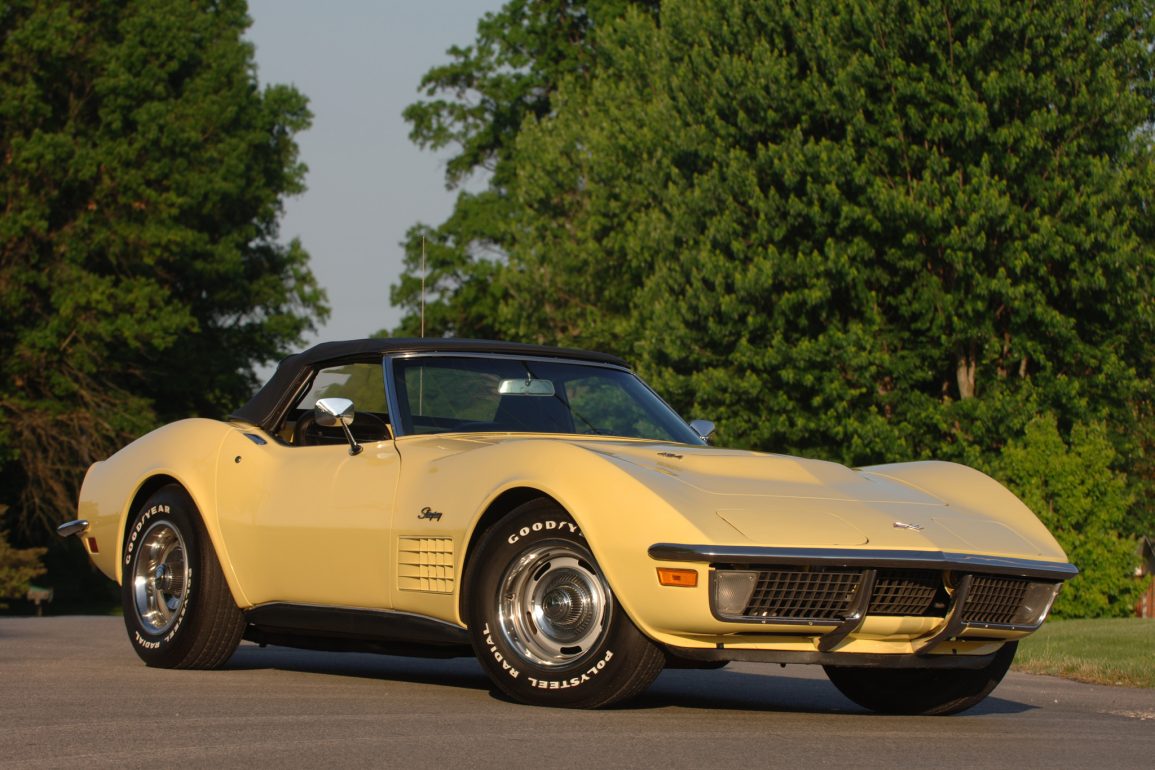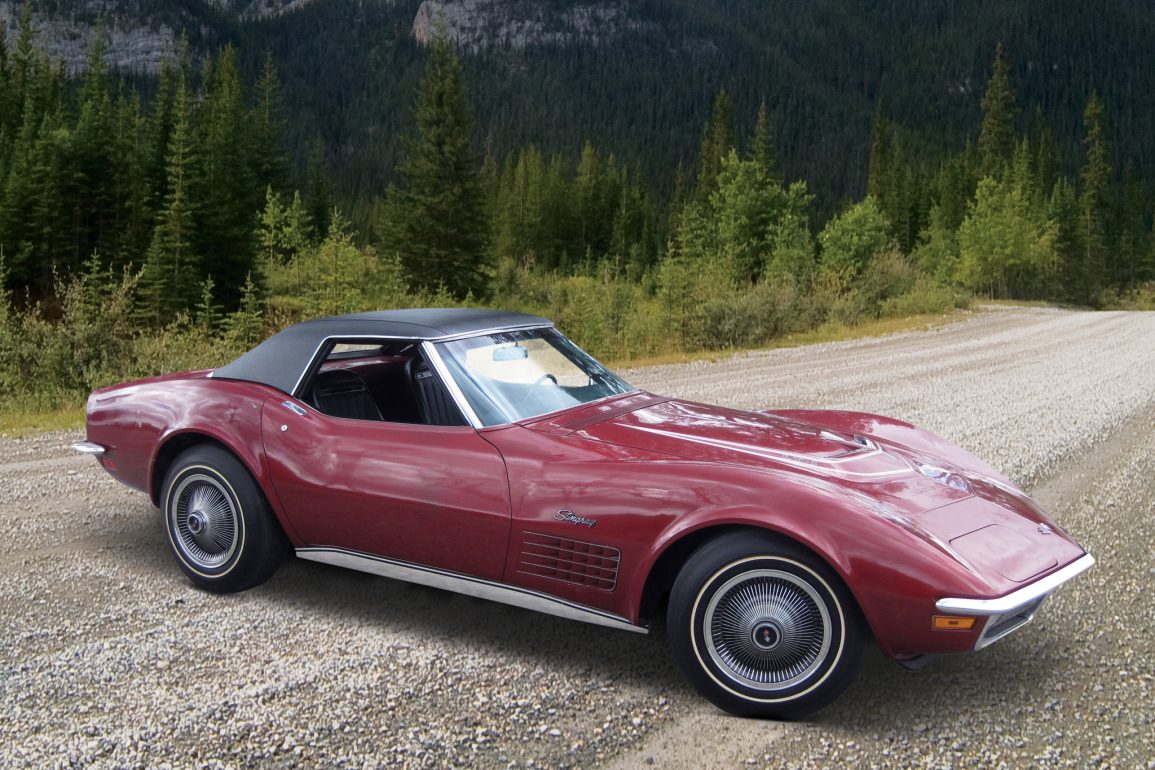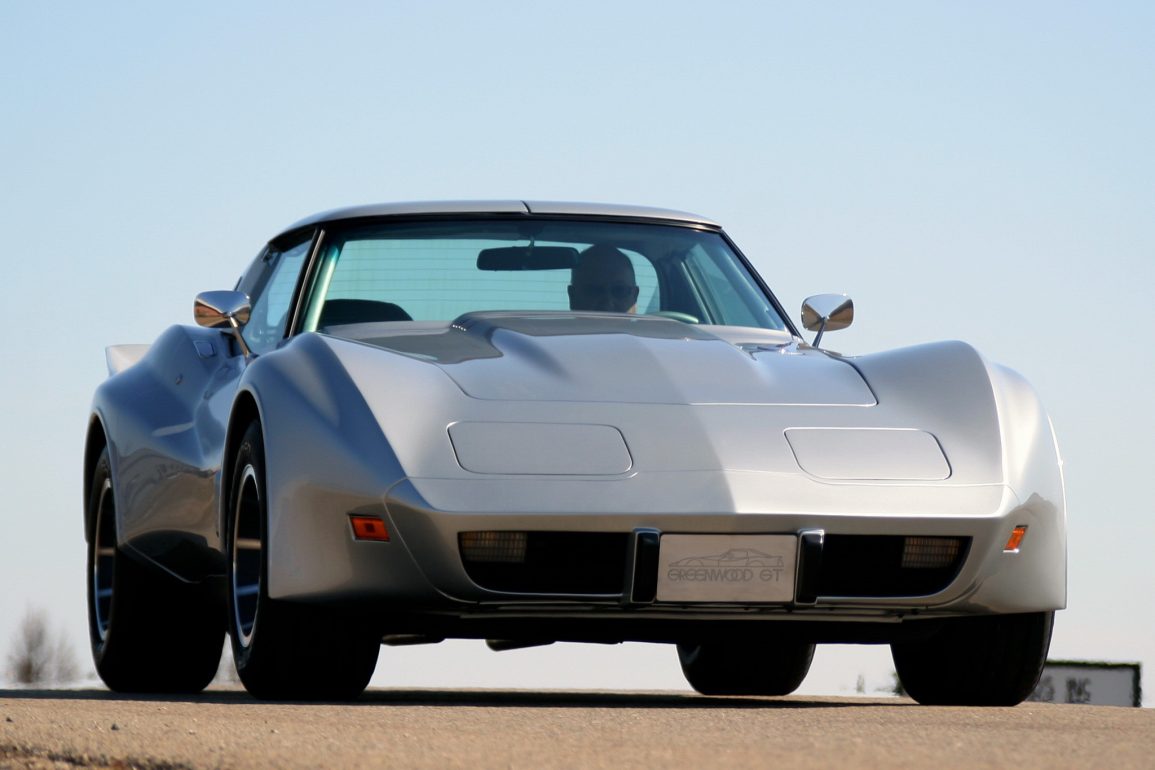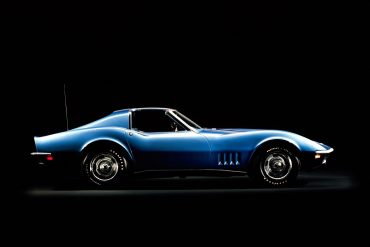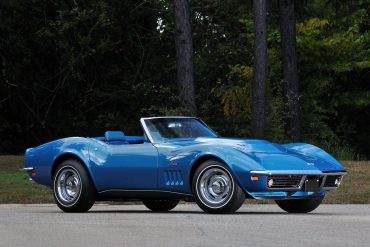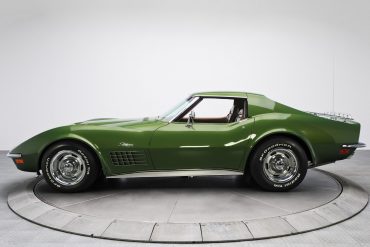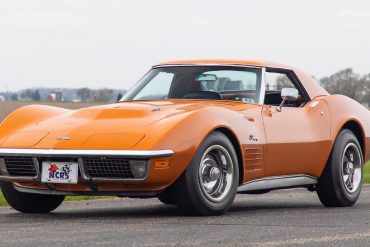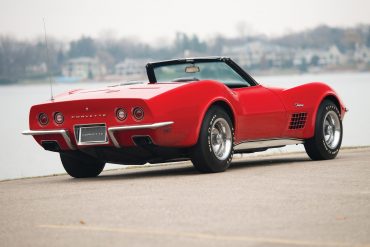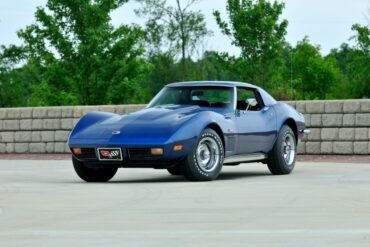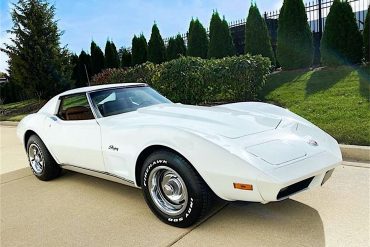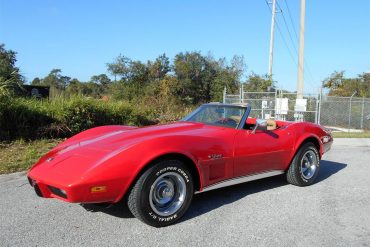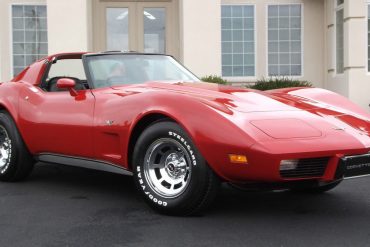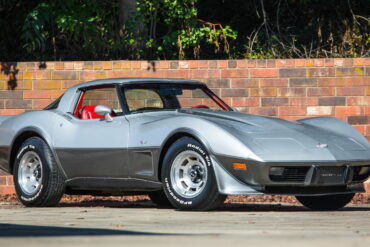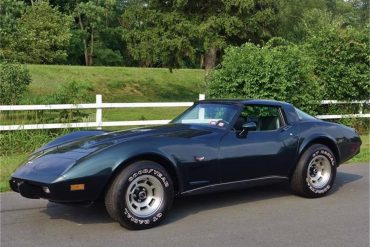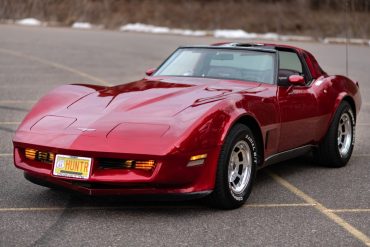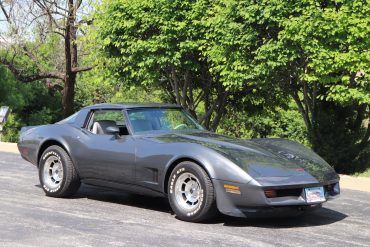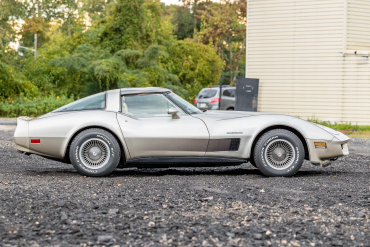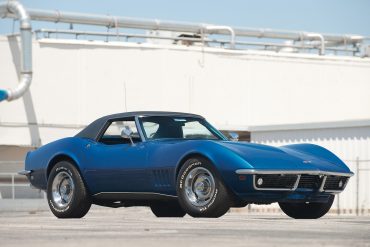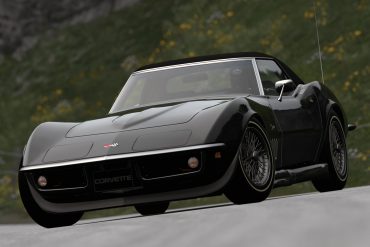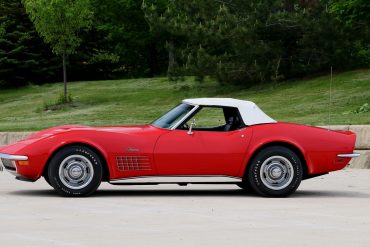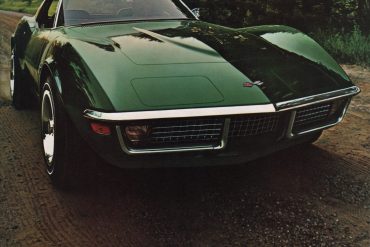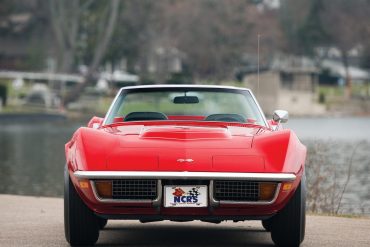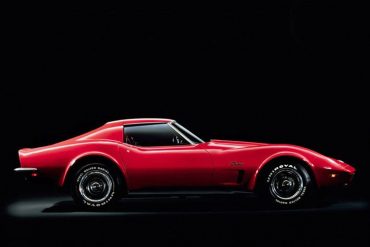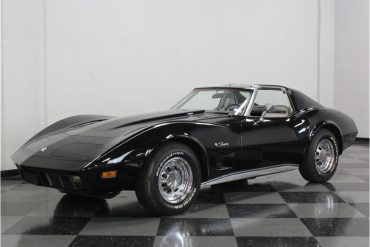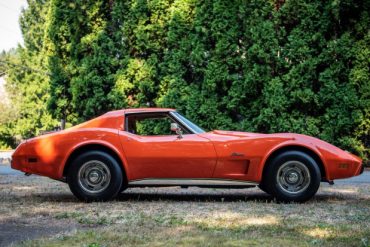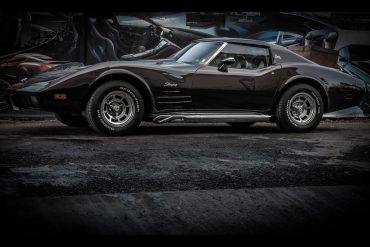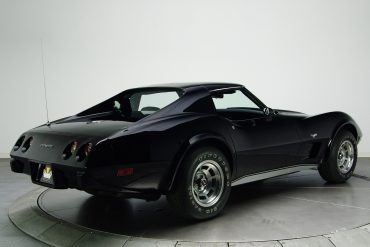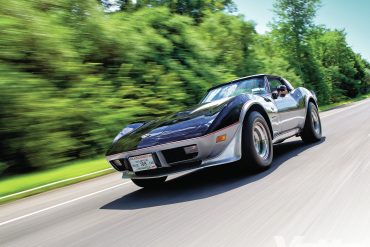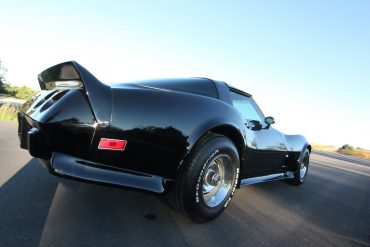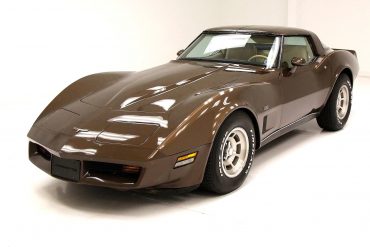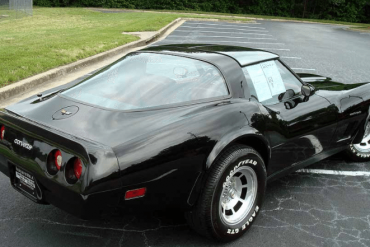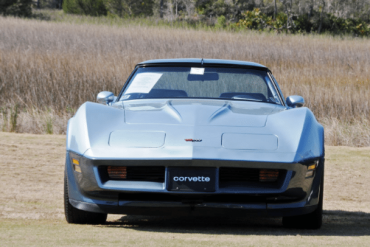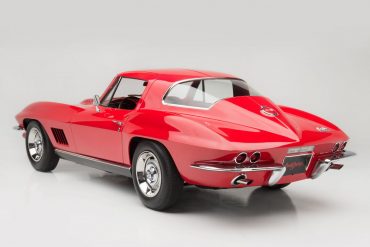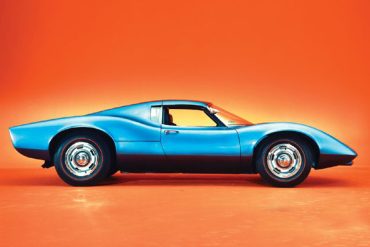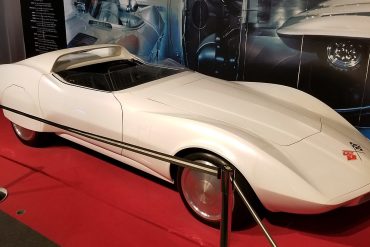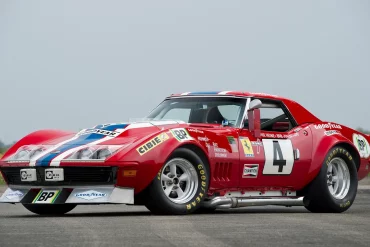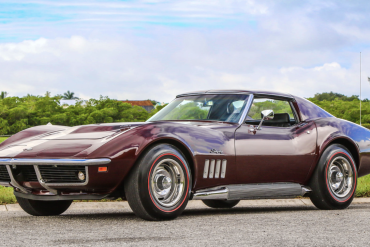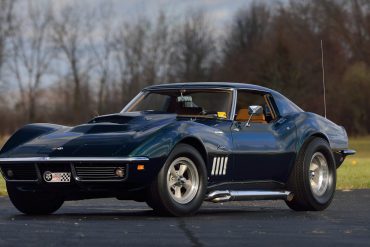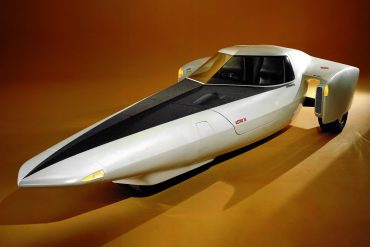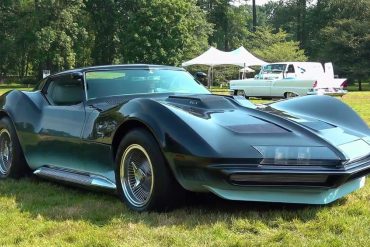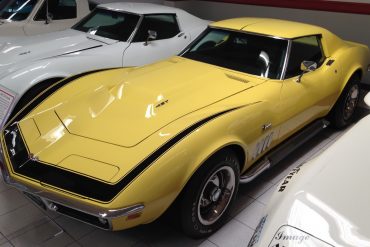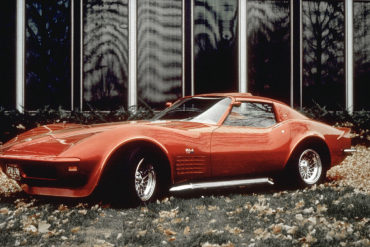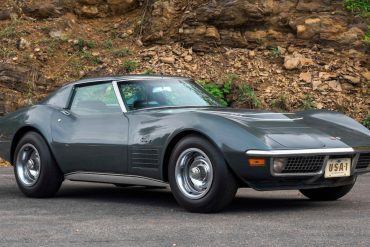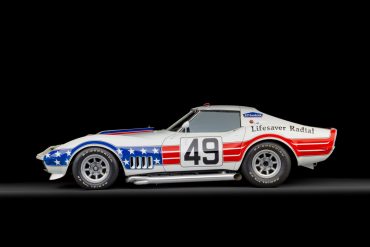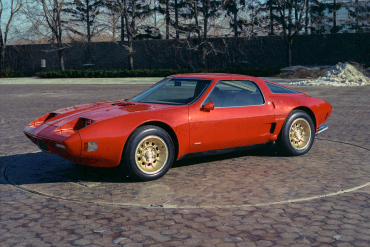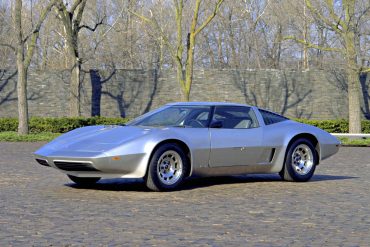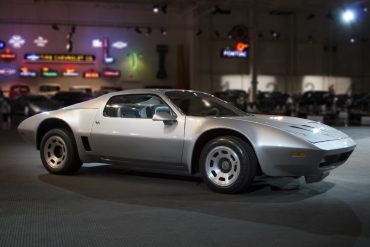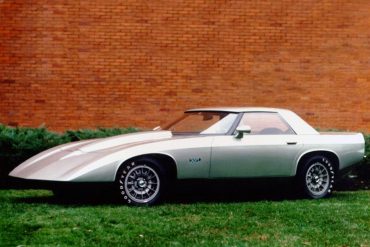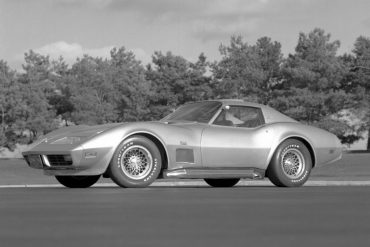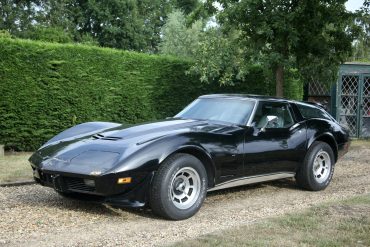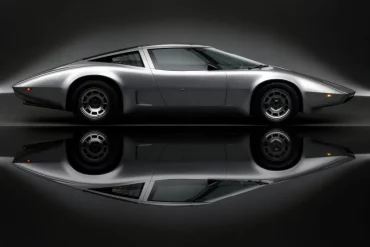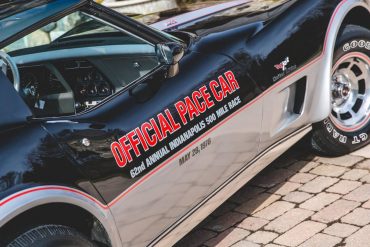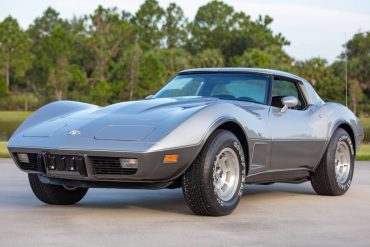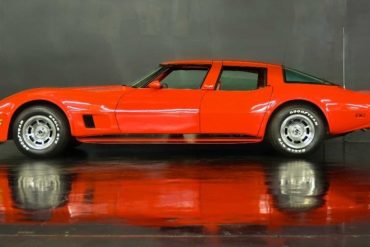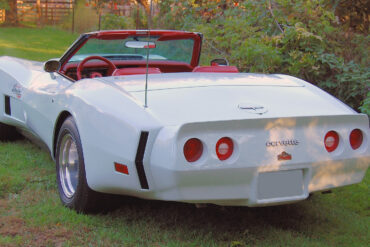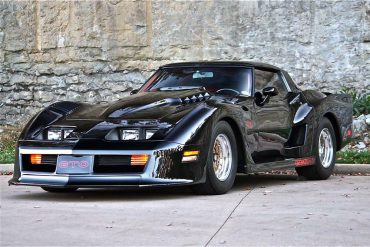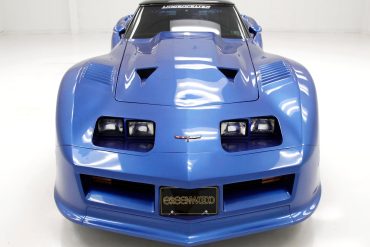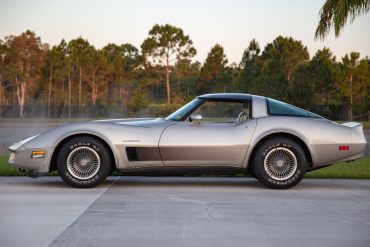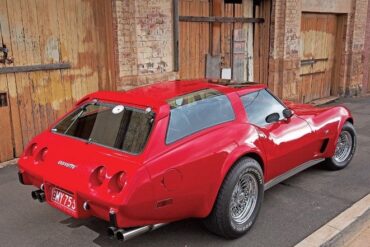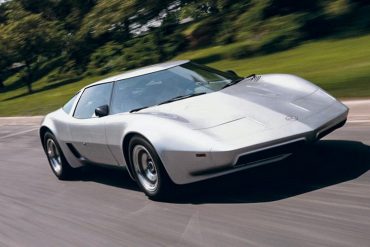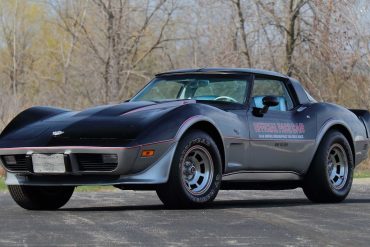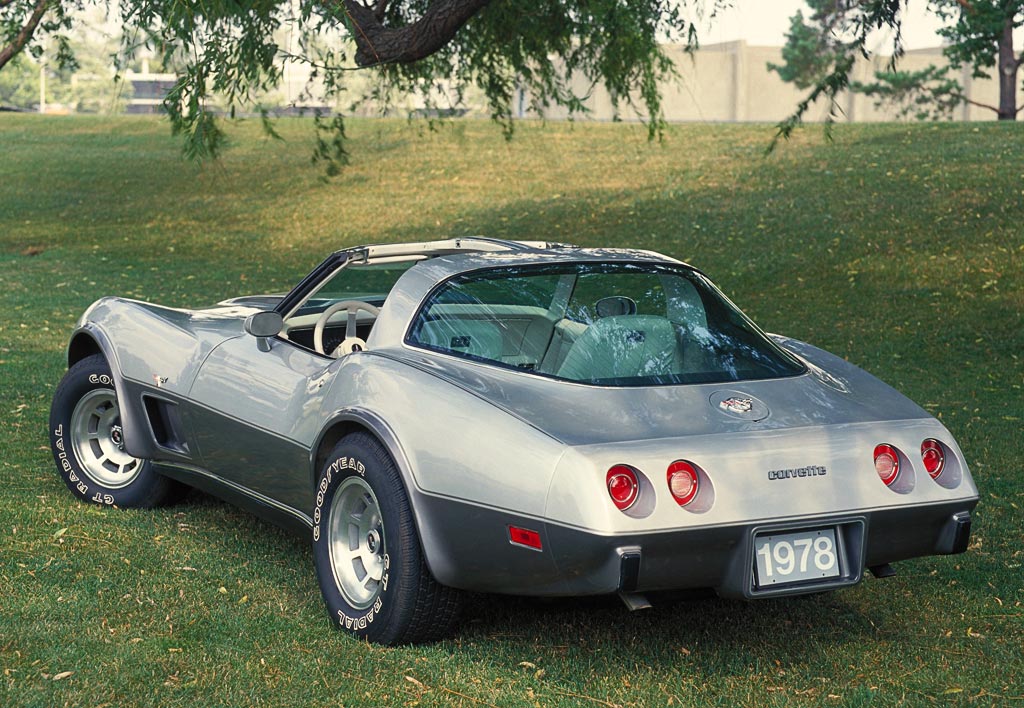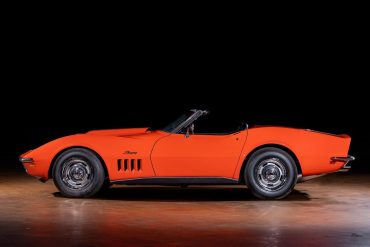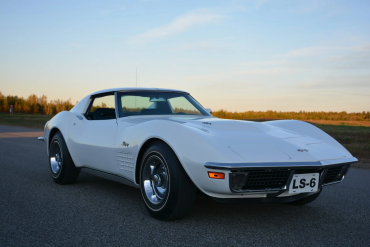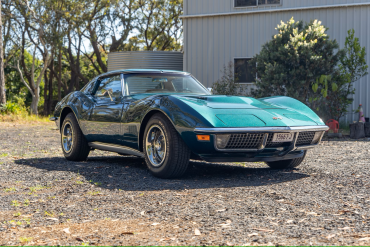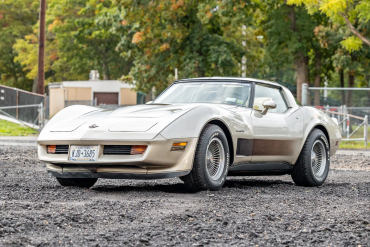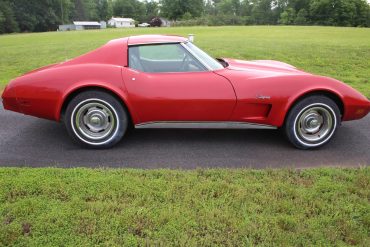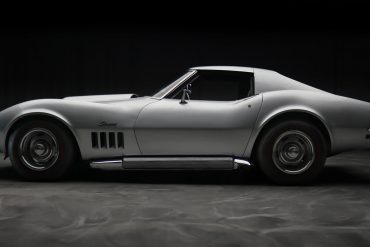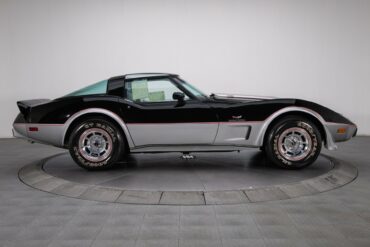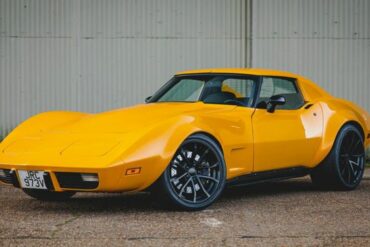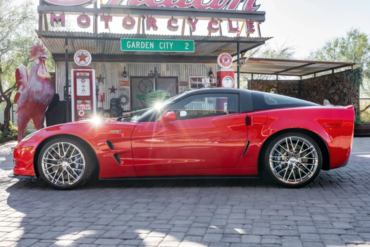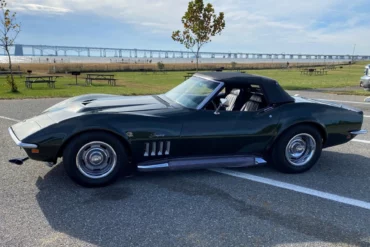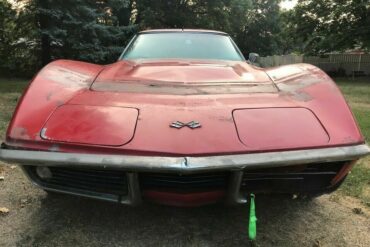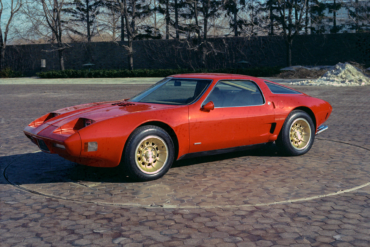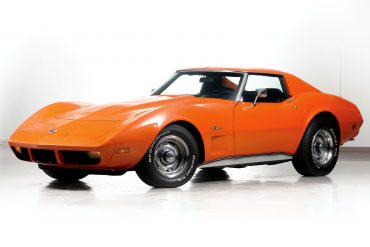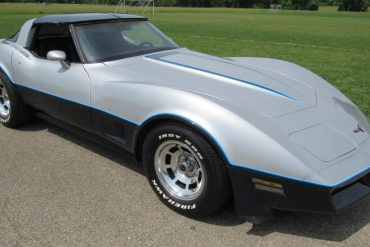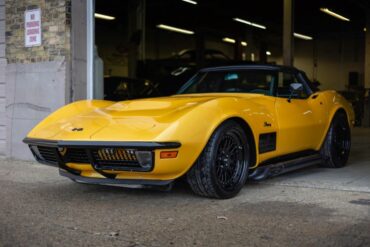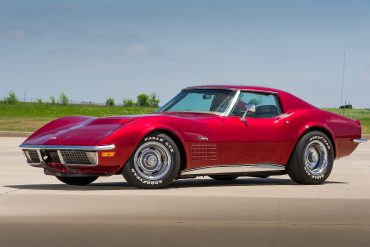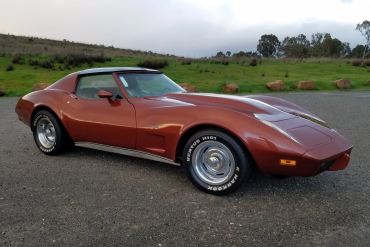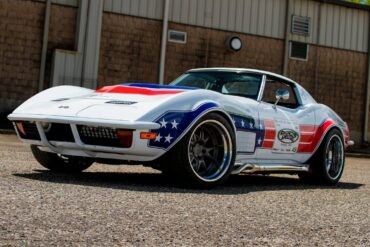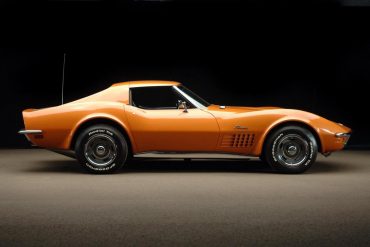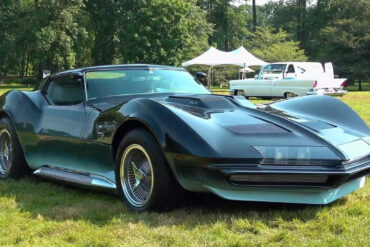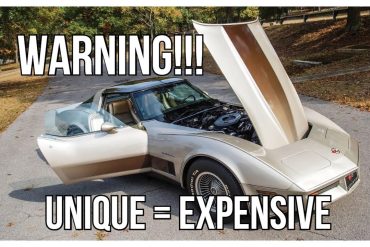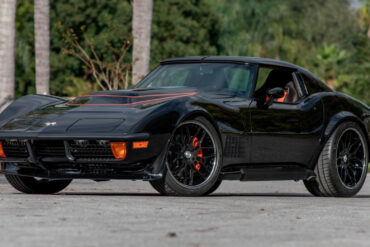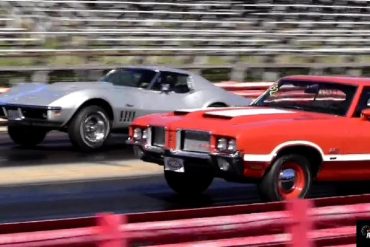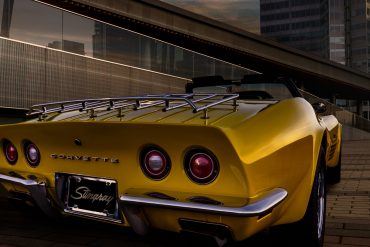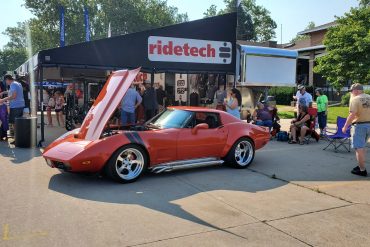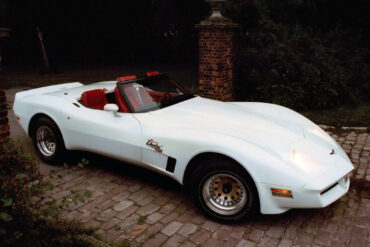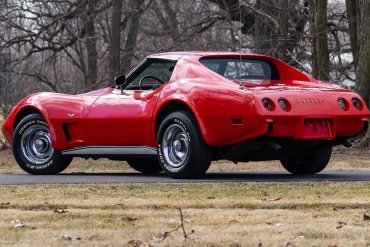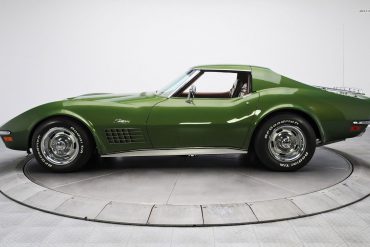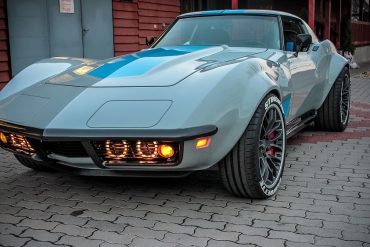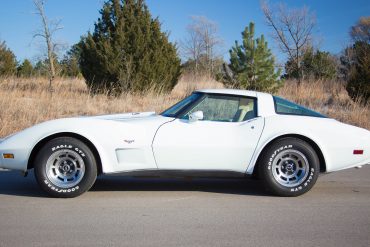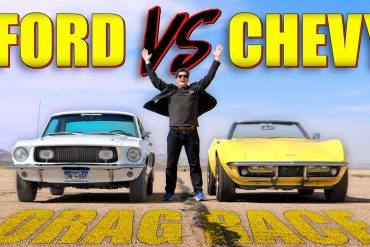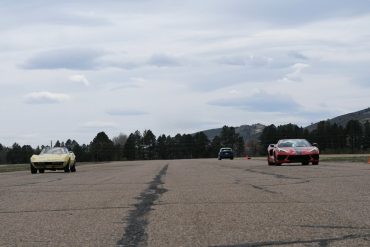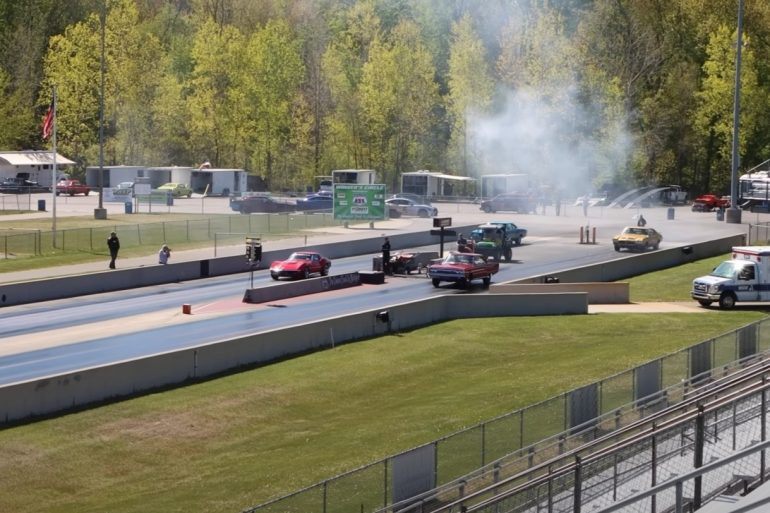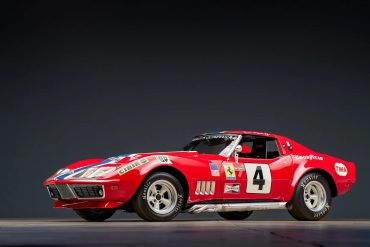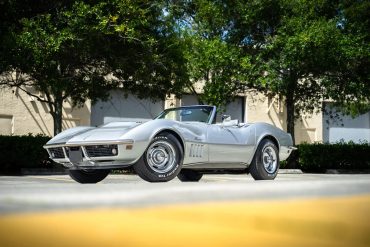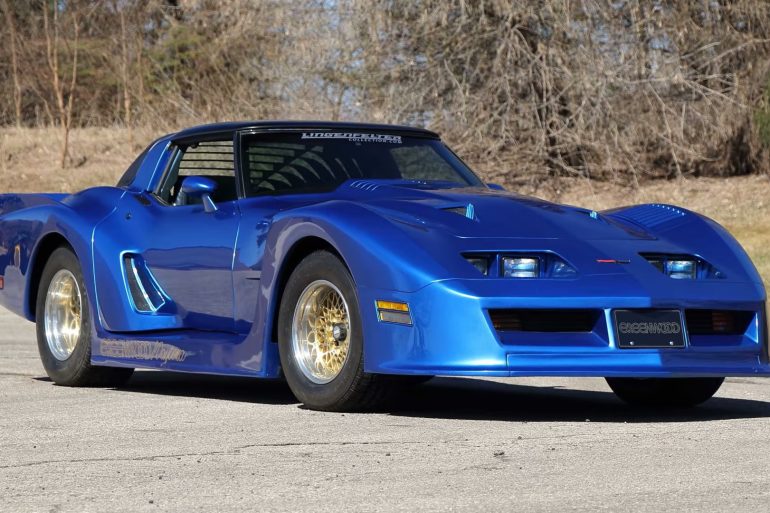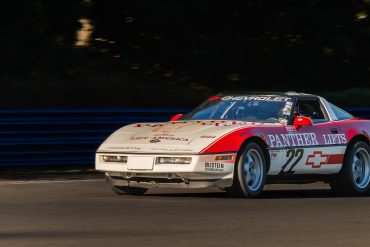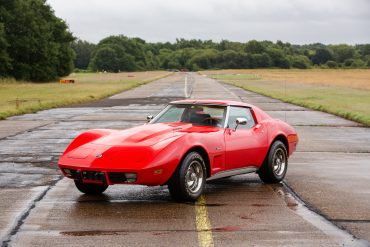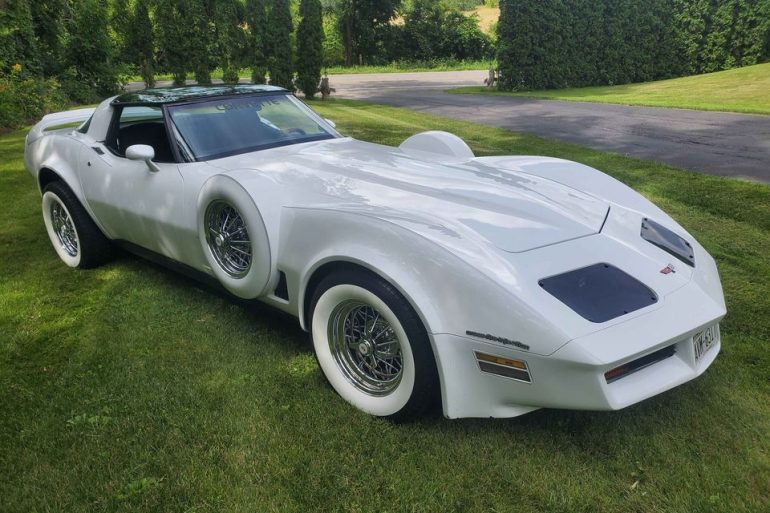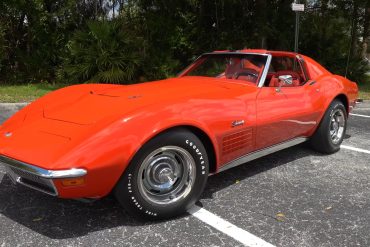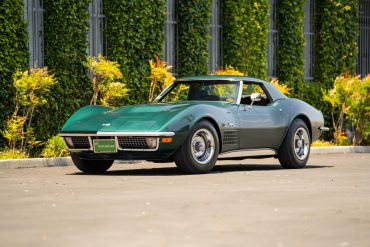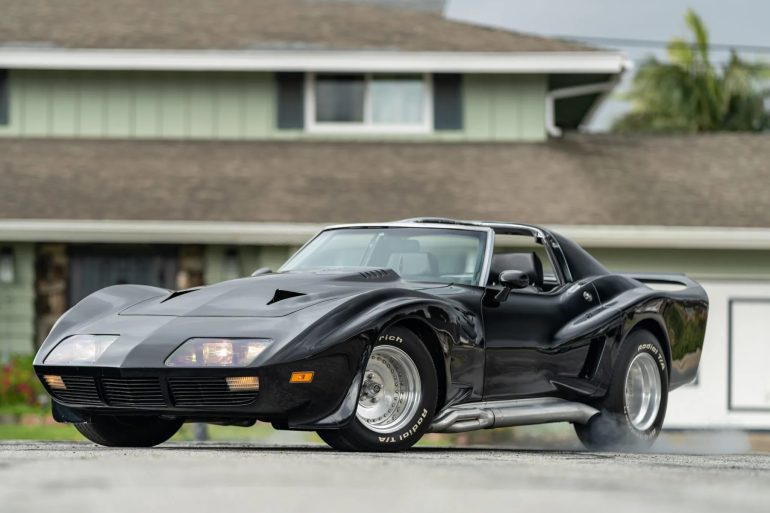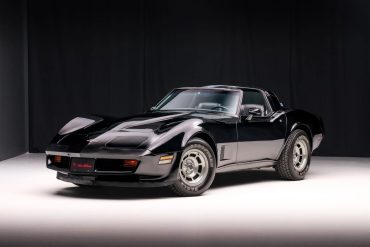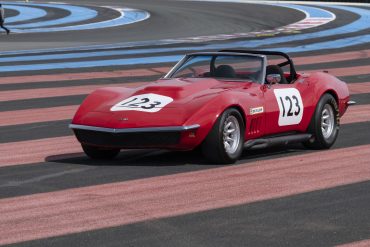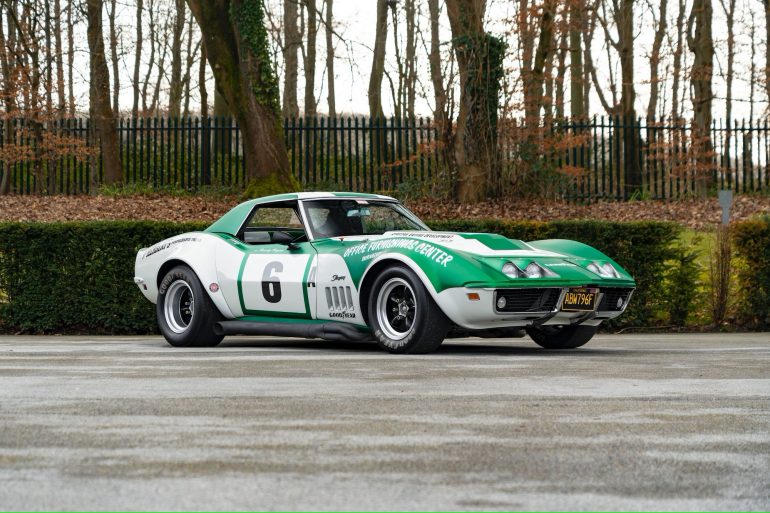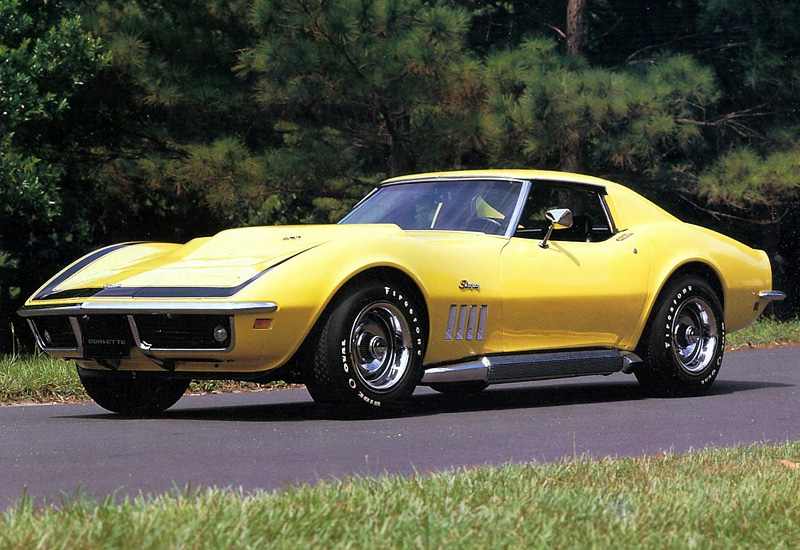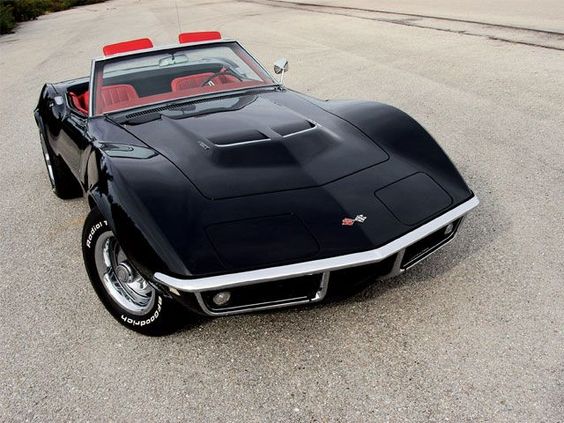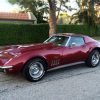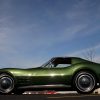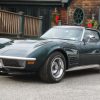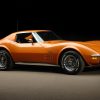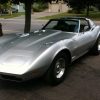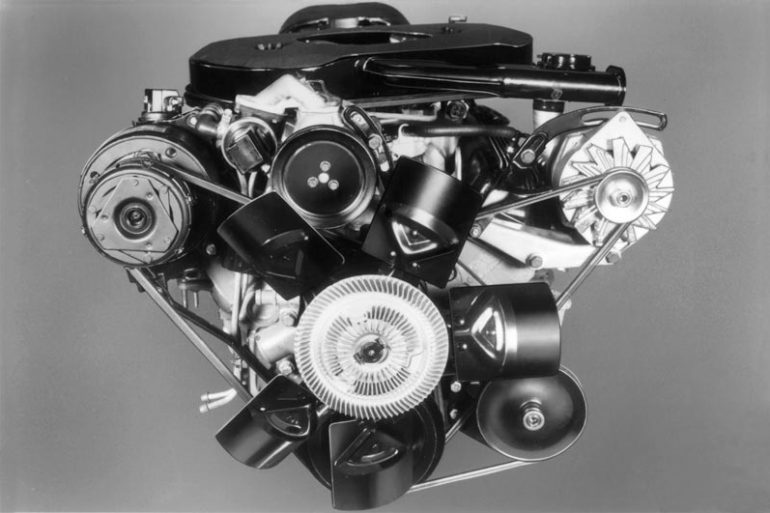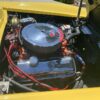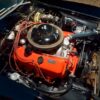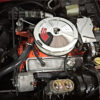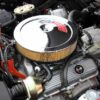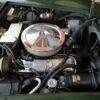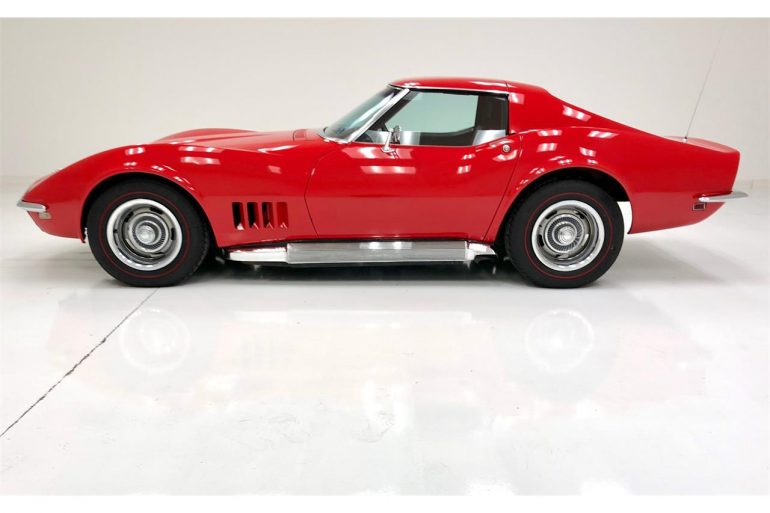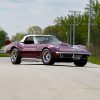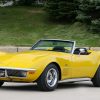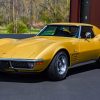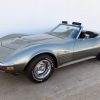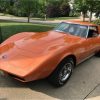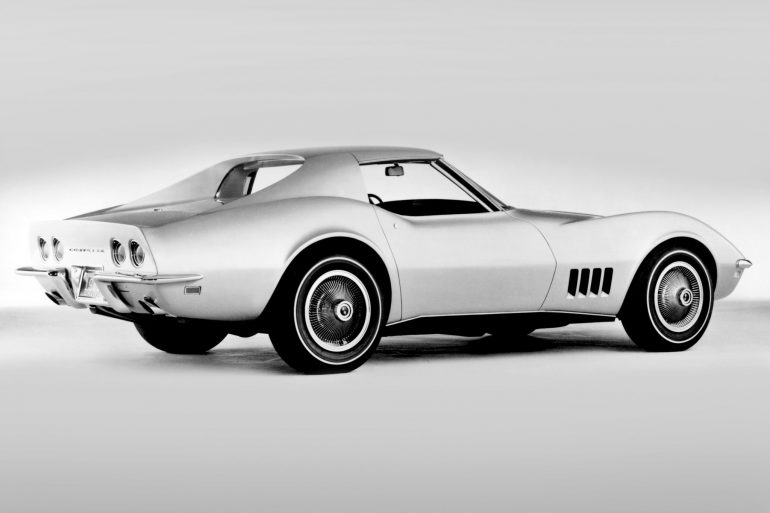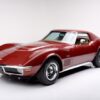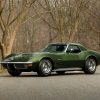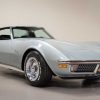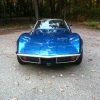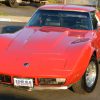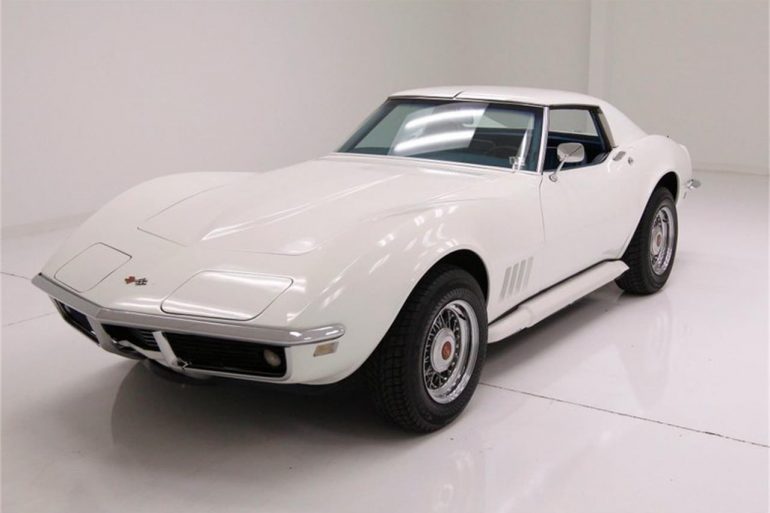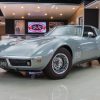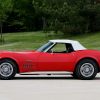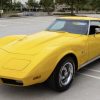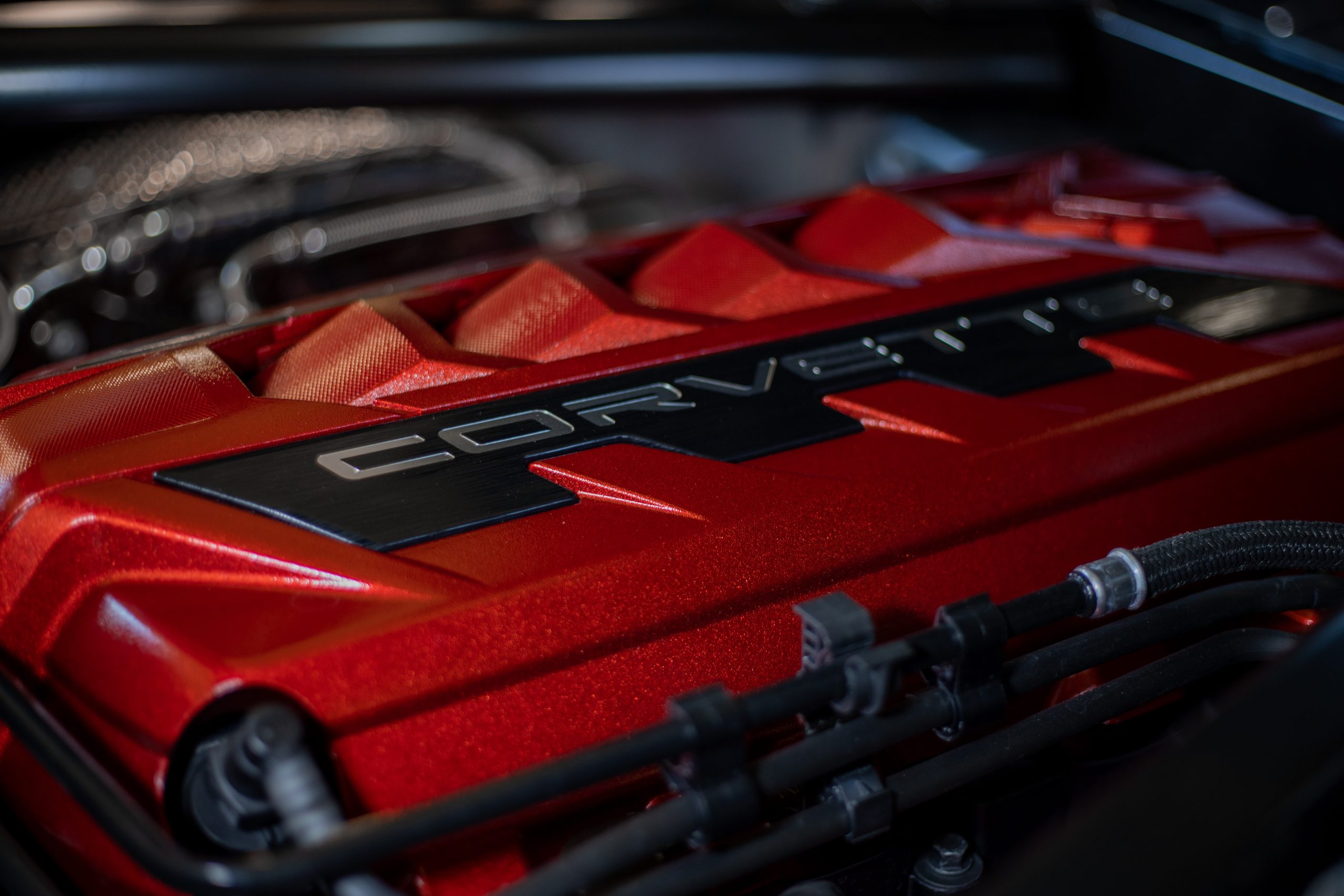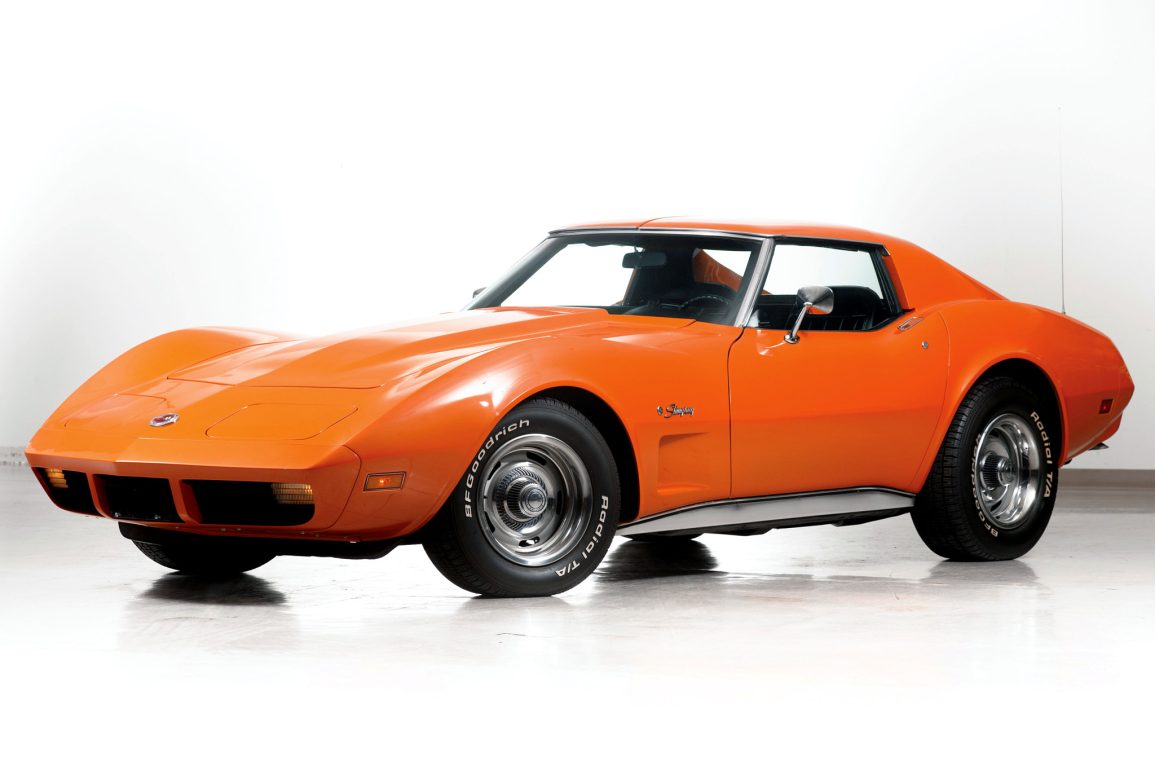
C3 Corvette - “The Shark Generation”
Research & Complete Reference Guide
Basics / The Story / Timeline / MY Research / MY Guides / Buyer's Guide / The Market / Vids & Pics / Latest / Tech Research
The C3: 1968 - 1982
The arrival of the C3 Chevy Corvette occurred far sooner than many enthusiasts would have predicted. The C1 Corvette had been produced over a period of ten years, albeit with significant design and mechanical improvements along the way.
While the first-generation, solid-axle Corvette had shown continual improvements in its sales numbers, critics agreed that it had outlived its time, and, by 1962, a new Corvette had not only been highly anticipated, it had been long overdue. Although Duntov and Mitchell’s second-generation Sting Ray had achieved massive success and was a favorite amongst both enthusiasts and critics alike, they knew that there was no way they could let the car remain unaltered for such a long duration again.
They literally began work on the next generation Corvette even as the paint was still drying on the second-generation mid-year models. The birth of the third-generation Corvette occurred during a time when the United States, and indeed the whole world, was immersed in social and political controversy. The United States was entrenched in the turbulence of the Vietnam War. U.S. involvement in Vietnam was staggering, with more than a half-million troops stationed in Southeast Asia.
One of the most controversial and heavily publicized battles of the entire Vietnam war – the Battle of Khe Sanh – began in late January of 1968, and would fuel protests against the war that would result in major eruptions of violence that would ultimately lead to the untimely demise of presidential hopeful Robert F. Kennedy and Martin Luther King, Jr later that same year.
King’s death led to race riots in many major U.S. Cities that lasted for several days. The women’s rights movement began to get a foothold on the world, as did the emerging sexual revolution. The widespread experimentation with drugs exploded as a social student pastime on college campuses. Richard Nixon defeated Hubert H. Humphrey to become the next president of the United States.
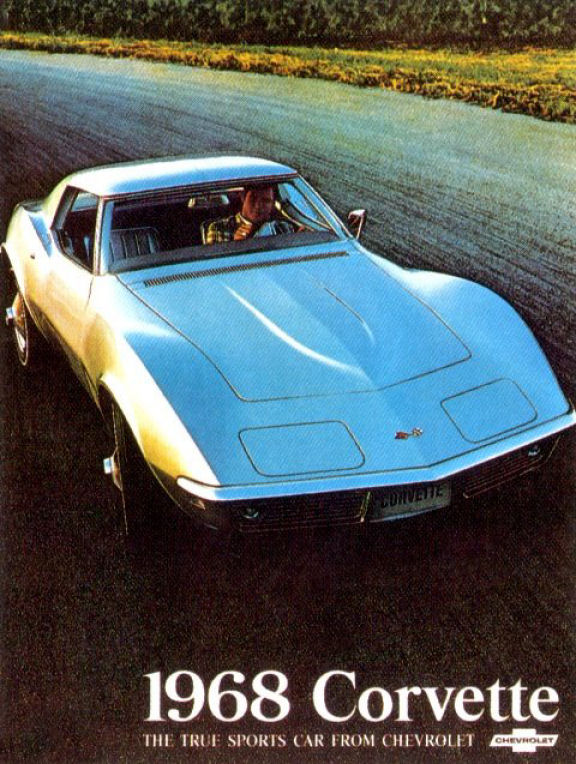
C3 Corvette Basics
Generation: C3 Corvette / Body Styles: 2 Door Coupe (1968-1982), 2 Door Convertible (1968-1975) / Production Years: 1968-1982 / Designed by: Bill Mitchell & Zora Arkus-Duntov / Production: 542,861 (1968-1982) / Model Years: 1968, 1969, 1970, 1971, 1972, 1973, 1974, 1975, 1976, 1977, 1978, 1979, 1980, 1981, 1982
The C3 Corvette Story & Details
Amidst all of this tumult, and perhaps (in part) because of it, a new Corvette was released in 1968 that was considered very different from its predecessors, and every bit as controversial as the era itself. The C3 Corvette, which was commonly referred to as the “Shark” generation, was more than just a re-imagining of the earlier C2. Instead, the C3 was an entirely new take on the sport car persona for which the second-generation Corvette had been so highly regarded. The C2, which had been as much a race car as it had been a cruiser, was about to be replaced by a Corvette which would be much more closely focused on becoming a plush but powerful “boulevard cruiser.”
Almost from day one, the third-generation Corvette would fall under the discriminating eye of enthusiasts and critics alike, especially given that the second-generation Corvette had become so revered around the world.
The C2 had literally rejuvenated the Corvette franchise, and it seemed reasonable to assume that the C3 would take the next, progressive step in the car’s evolution. Enthusiasts were doubtless hopeful for a mid-engine Corvette, as had been rumored since 1958 – or perhaps even a rear-engine design akin to Edward Cole’s Chevy Corvair or Bill Mitchell’s Monza GT and SS show cars. However, for a multitude of reasons, the new Corvette would evolve in a completely different direction – one that would go from starting its life as being a “flawed” design to (as with each Corvette generation before it) becoming a car that was a near perfect fit for the era which it was intended.
The evolution of the third-generation Corvette actually began early on in the career of the second-generation Sting Ray. As early as 1964, the concept of a third generation Corvette was already gaining traction amongst the executives and engineering teams at General Motors. 1964 was actually a pivotal year in the annals of the third-generations early history for two specific, though unlikely, reasons: the arrival of the big-engine, mid-size muscle car (as exemplified by the Chevy Nova), and the birth of the “ponycar” with the arrival of Lee Iacocca’s Ford Mustang. Both styles of car would prove immensely popular with automotive enthusiasts, and would inspire other manufacturers to follow in the same direction. By 1967, the automotive market was riddled with muscle cars like the Olds 4-4-2, the Dodge Charger, and the Pontiac GTO, and even the Chevy Chevelle SS 396. Similarly, the ponycar market would prove lucrative and would give rise to a number of competitors – including Chevrolet’s very own Camaro.
The rise of both muscle cars and “ponycars” would force designers of the Corvette to take pause and re-evaluate why consumers would consider the Corvette of value when it was more expensive, and less accommodating than the emerging alternatives. Where the second-generation Corvette was an asphalt pounding, straight-line missile that was capable of producing impressive acceleration numbers, there were a number of other cars on the market – including many of Chevy’s own models – that were capable of producing the same straight-line speed for a fraction of the price. If the Corvette was going to continue to compete with this new onslaught of competitors, it would have to offer more than just quick starts off the line. On the other end of the automotive spectrum, European manufacturers were producing automobiles that were deemed considerably more sophisticated than the Chevy Corvette.
These higher end sports-cars showcased leading edge advances in mechanical technology and exotic bodyline styling that made the Corvette seem dated by comparison. Amongst the leaders of this “European evolution” were cars like the Italian mid-engine Lamborghini Miura, and the German rear-engine Porsche 911, both of which introduced newer automotive technologies than anything that had been considered for the Corvette prior to that point.
However, for Bill Mitchell, Zora Arkus-Duntov, and the Chevrolet Engineering Center (under the direction of Frank Winchell), the 911 and the Miura represented a design and development challenge that could not go unanswered. As a result, the Chevrolet Engineering Center decided that they would commence development of the C3 Corvette with a little friendly competition between several of its own engineering groups. Only one design criteria was specified at the start – anticipated introduction of the third-generation Corvette was slated for the 1967 model year.
From the onset, the departments really divided themselves amongst two teams – Frank Winchell, director of the Chevrolet Engineering Center, rallied the first group, and Zora Arkus-Duntov championed the other. While Winchell and Duntov had different opinions about many of the specific features of the new Corvette, both assumed that the next-generation would feature a mid/rear-engine format. Frank Winchell’s team drew much of their inspiration from the Chevy Corvair, which in turn had taken many of its styling cues from the Porsche 356 and early 911 designs.
Winchell’s group conjured up an advanced, very compact design that showcased a Lotus-type backbone frame, all-independent suspension, and a 327-cubic-inch V-8 in the rear of the car driving a modified version of the Pontiac Tempest’s rear transaxle. However, with all the added weight over the rear axle, the car’s aft-weight bias was nearly 70 percent, making the car completely unmanageable on the road. The concept Corvette, which was designated the XP-819, was ill-conceived, and was accidentally destroyed during a high-speed lane change test.
Duntov’s group, on the other hand, had taken a somewhat different approach in their design. Instead of a rear engine approach, they focused instead on developing a true mid-engine automobile that showcased a big-block Mark IV engine that was positioned just ahead of the rear wheels. The radiator was placed in the extreme rear behind the engine, and a pair of fans provided low-speed cooling via a “forced draft” effect.
Beyond its mechanical design, Duntov’s group also developed a shape for their car’s fiberglass body. To showcase the design, they prepared a couple of small-scale models in 1965. The design lifted elements from Bill Mitchell’s Mako Shark IIconcept vehicle, especially from the Shark’s front end. These elements were mated to a curvy mid-section that ended in a long, robust “tail.” The car’s beltlines swept sharply upward to a “flying buttress” rear roofline similar to the one found on Porsche’s mid-engine 904 sports-racer automobile. The roofline featured a shallow, vertically set backlight that was flanked by long, gracefully tapered C-pillars.
Bill Mitchell assembled his own design crew and set out to produce a full-size Corvette mock-up. As with Duntov’s team, Mitchell’s body design was also largely inspired by the earlier Mako Shark concept vehicle, although the aggressive looking concept featured some refinements that enhanced the car’s overall appearance. The full-size mock-up was dominated by a very pointy front end (like that found on the Shark), a severe “ducktail”, a tapered “boattail” roofline (similar to those ultimately fabricated for the Sting Ray fastback), and bulging, fully skirted rear fenders with vertical air slots in their leading edges.
Mitchell’s design, like those of Winchell’s and Duntov’s teams, contained a mid-mounted V-8 engine that was so massive that it made installing a rear window impossible. To compensate for the absent rear window, Mitchell devised a stylized rear-facing periscope which was molded into the forward portion of the car’s roof.
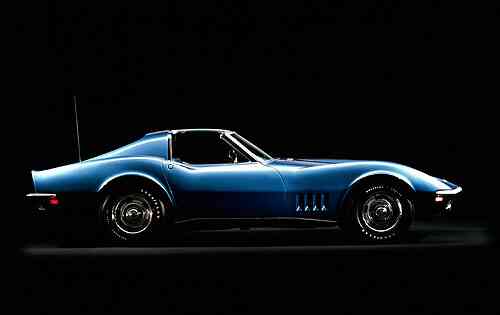
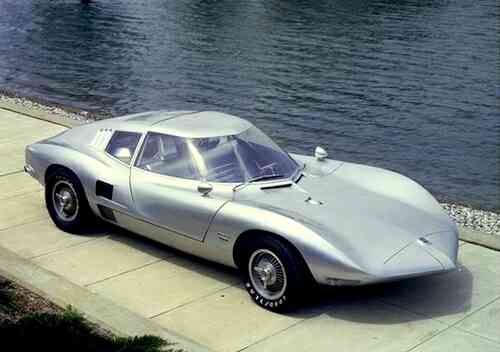
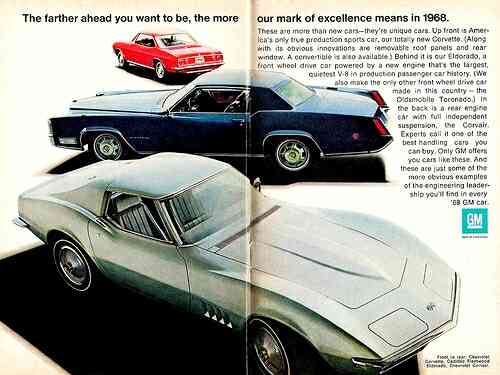
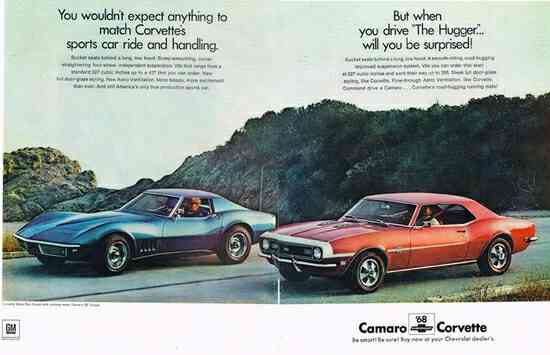
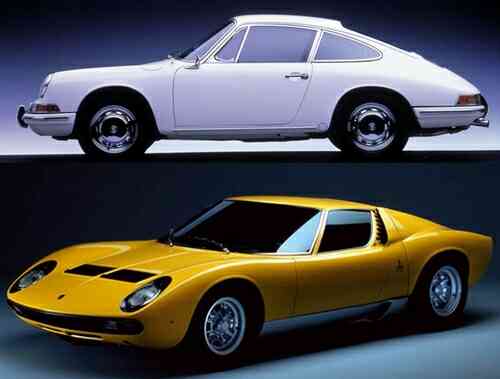
Plenty To Choose From. Take Your Pick.
While all Corvettes are iconic, and while each has a loyal following of owners and enthusiasts who claim “their generation” is the best, there is little doubt that the third-generation Corvette is one of the most iconic generations of them all. Consider this – the C3 still holds the record for the longest production run of any generation Corvette, before or since. While early model years (1968 – 1972) featured big engines producing massive horsepower, stricter Federal emissions regulations would cause Chevrolet to reduce engine output ratings in later models (1973 – 1982). At the same time, these changes forced Chevrolet to improve upon their engineering standards. By looking for ways to reduce the car’s weight and improve upon its overall design, they were able to continue to drive performance, even with the restrictions forced upon them.
When developing the third-generation Corvette, the design became known as the Coke bottle design. It was so named because the car's profile resembled a glass Coca Cola bottle. What is not as commonly known about this design styling is that Pontiac nearly beat Chevrolet in developing a "Coke" bottle design when they introduced their 1965 Banshee, a car that would have been stiff competition for the Corvette.
DID YOU KNOW?
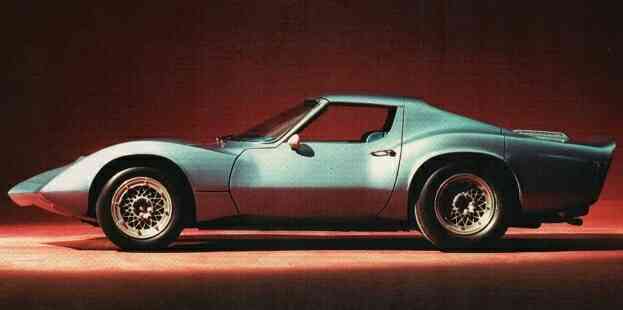
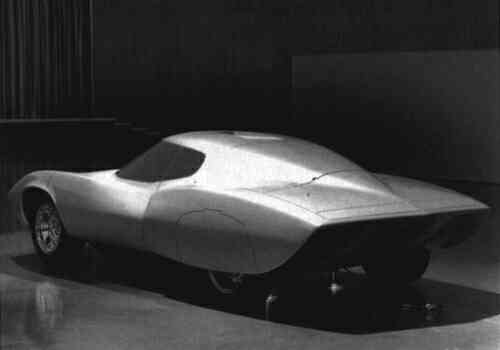
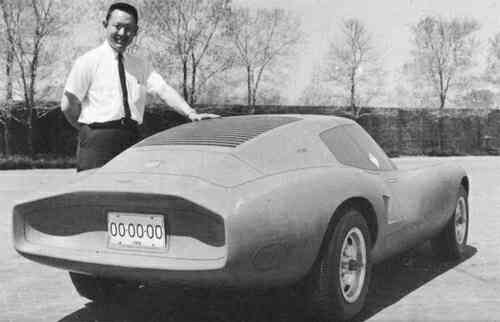
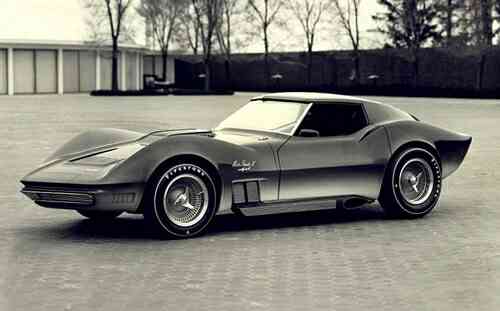
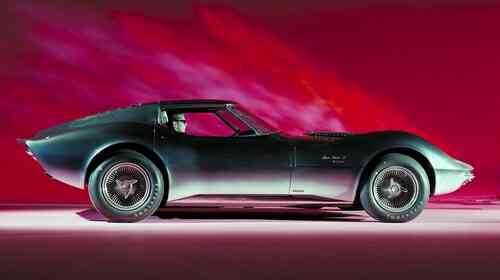
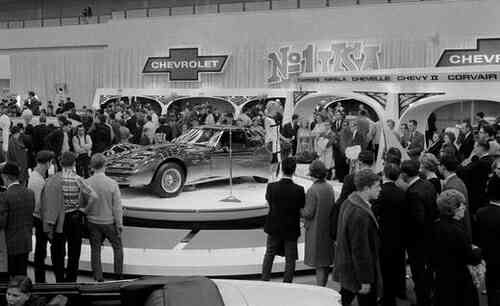
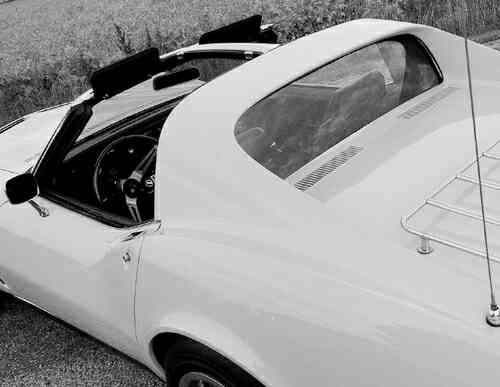
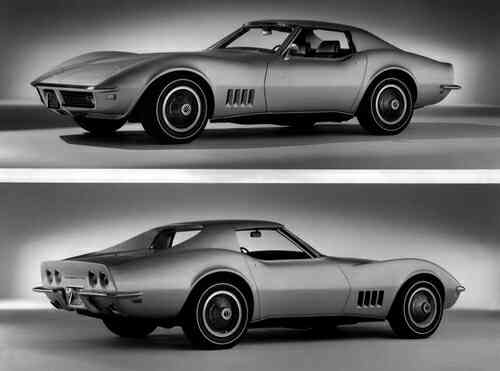
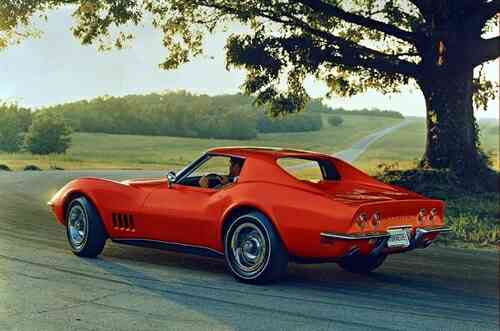
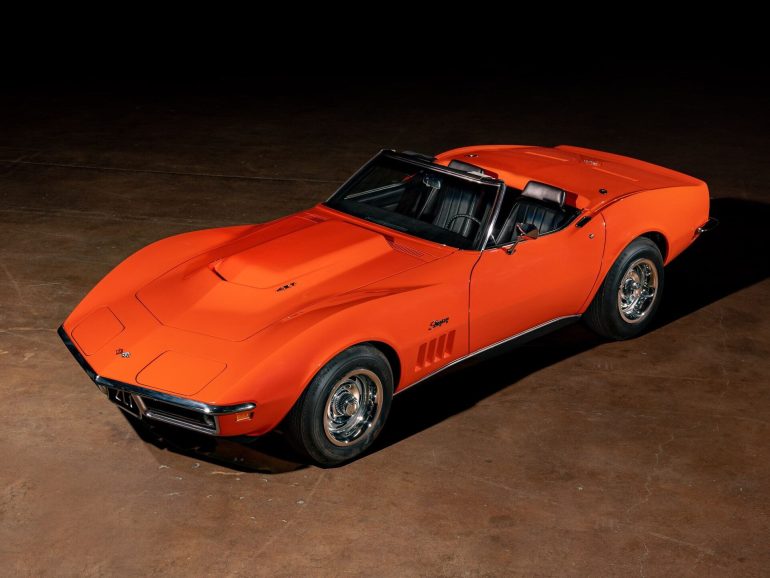 1969 Chevrolet Corvette Stingray ZL-1 Convertible
Motorcar Studios ©2022 Courtesy of RM Sotheby's
1969 Chevrolet Corvette Stingray ZL-1 Convertible
Motorcar Studios ©2022 Courtesy of RM Sotheby'sThe C3 Corvette Taking Shape
In the end, practicality and parts availability won out over all of the designs, and the rear- and mid-engine concepts were scrapped. The reality was that GM simply didn’t have the required components to make those types of engine mountings possible. General Motors had yet to produce a transaxle capable of withstanding the torque of a high-power V-8 engine. While some argued that GM could make the investment to develop such a transaxle, the cost to do so would drive Corvette prices beyond what anyone would willingly pay for the car.
As all of the mid- and rear-engine designs were discarded, Bill Mitchell wasted no time in redirecting the focus behind the development of a Corvette concept that could conceivably go to market in just a few years’ time. He knew that if General Motors was going to continue enticing consumers with a new Corvette, the car would have to lure them in with exotic styling, especially given that the C2 Corvette had already accomplished so much from a performance standpoint. He also knew that the C3 would be mechanically very similar to its predecessor since there was no way that Chevrolet would disperse the kind of money needed to develop another completely new Corvette only a couple of years after the Sting Ray had been unveiled.
To solve this dilemma (and in an effort to begin enticing prospective consumers into the idea of purchasing a third-generation Corvette), Mitchell turned to a young designer by the name of Larry Shinoda. Executed under Mitchell’s direction, Shinoda set about developing a new conceptual design for a Corvette that drew on oceanic design cues in much the same way that the Mako I had in 1960.
Beginning his efforts in 1964, Shinoda worked diligently on the design for a little under a year. The result of his effort was the Mako II Concept Vehicle, which started its life as a static, full-size mockup of an actual car. Although adaptable to support either a front- or rear-engine, the Mako II’s basic overall design became the take-off point for a new front-engine “theme car” that served both as a second design alternative to the original, mid- and rear-engine designs proposed by Duntov and the Advanced Design studios team as well as a starting place for the future development of the third-generation Corvette.
In the end, the mid-engine alternative for the car was abandoned because of financial constraints. With a front-engine concept again dictating the direction the design was to evolve, Larry Shinoda and Bill Mitchell turned their concept over to the Chevrolet Styling department. Under the direction of David Holls, the new Corvette chassis was adapted to mate with the chassis of the existing C2 Stingray. It was this new hybrid of the Mako II Shark with the second-generation chassis from which the foundation from which the C3 Corvette would ultimately evolve.
As Chevrolet engineers and designers, now under the direction of Holls, set to work on streamlining the design of the C3, the Mako II Corvette began an aggressive campaign on the auto-show circuit. Most enthusiasts quickly recognized the Mako II for what it really was – not just another show car, but rather a test case to judge public reaction to the next-generation Corvette. As if to support this sentiment, GM decided it should replace the full-scale mock-up of the Mako II with a fully operation version. In April, 1965 they did just that. The original static Mako II was retired and for several months no variant of the “Shark” could be seen. Then, in October of that same year, Chevrolet introduced the second Mako II, a car that was somewhat less radical in design than the original concept, but was also closer to the car that would ultimately be produced.
Interestingly, the new Shark, and the production Corvette that would follow, would actually remain quite similar to the C2 Sting Ray, save for its outward appearance. Chevrolet utilized much of the existing hardware of the C2, and decided that a “sexy new shell” and an even higher-performance engine would be enough to keep Corvette enthusiasts engaged and allow sales of the third-generation Corvette to continue their upward momentum.
The body-styling of the third-generation Corvette was a blend of the Mako II, along with styling cues from the mid-engine concepts that had been developed early on in the creation of the C3. From the beltline down, the new Corvette was very similar to the Mako II prototype, although it featured softer, less extreme contours. The roof treatment however was based on the car that Duntov‘s group had proposed. Nicknamed the “sugar scoop”, the roof included a vertical backlight/window that stood perpendicular to the area that would be considered the rear-decklid (though this term was actually a misnomer as no there was no actual decklid to speak of). Framing the rear window, the roofline extended outward, on either side of the car, diminishing to a point just ahead of the rear of the vehicle. In effect, this design took on the illusion of a large “shovel” or “scoop”, which explained its particular nickname.
The “sugar scoop” design was a clear departure from the Mako II fastback design. Perhaps Chevrolet simply wanted to move forward with a different design, or perhaps it was believed that the fastback rear-window did not offer enough visibility. Regardless of the reason, it was intended from the beginning that the vertical backlight – as well as the portion of the roof that covered the interior of the car – be removable. While this new design cue was not intended to replace the Corvette convertible, Chevy felt that this new configuration would appeal just as strongly to the open-air enthusiasts while at the same time offering far better weather protection and the structural rigidity associated with closed body types.
Of course, even as the conceptual design of the production C3 began to take shape, there were problems that arose along the way that inhibited its development. First, the new design turned out to have excessive front end lift issues at high speeds, which seriously compromised the cars stability and, in turn, safety. What’s worse, a rear spoiler had been added to the car to help keep the rear wheels on the ground, but this rear spoiler only added to the issue of front end lift, causing the nose to lift even more.
Second, the removable Targa-style roof had its own set of issues. The original concept for the removable top called for a single fiberglass component. However, as the body design of the car had begun to take shape, it had been quickly discovered that a single-piece, removable fiberglass roof compromised the strength of the body to a point that could result in damage to the structural integrity of the entire car. In the conceptual designs, the cars that were built with the single-piece removable top produced excessive amounts of creaks and groans in the automotive coachwork. To remedy this issue, Corvette engineers added a longitudinal support bar between the windshield and the fixed section of the roof, thereby creating the first ever T-top roof.
Perhaps the most significant design flaw of the Mako inspired automotive styling was poor engine cooling. Given that Corvette engineers had planned on utilizing the same big-block engines that had been utilized in the second-generation Corvettes, the emerging design presented seriously constricted airflow within the engine compartment. The new design featured a narrow engine bay and a shallow front grille, both of which seriously impaired airflow through the car’s radiator, the result of which meant that that functional cooling would be marginal in hot weather, especially when running the air conditioning system. Although this issue was identified early in the development of the final design, constricted air flow through the cooling system would remain an issue throughout the C3’s entire production run.
Although the design team behind the new Corvette worked to resolve these (and other) issues, the development of the C3 Corvette would ultimately be postponed a year because of it. Ultimately, many of the design elements that had been inspired by the Mako Shark concept were revised or completely re-imagined as the final design was completed. One design cue that did survive from the Mako II was a vacuum-operated flip-up panel that concealed the windshield wipers. Similarly, the concealed headlamps that had been introduced on the second-generation Corvette carried forward, though the new design featured simple flip-up assemblies which operated by using engine vacuum, instead of the Sting Ray’s electric actuator assemblies
As the design deadline approached, it was decided that the introduction of the C3 Corvette would be delayed until the 1968 model year (instead of 1967 as originally planned.) It was probably just as well. Although the Federal government had mandated the first safety and emissions standards nationwide at the onset of the 1968 model year, Chevrolet would have made certain that a new production model vehicle had been engineered to meet those same standards.
Despite the extra year that the C3 designer and engineers received to improve upon the design, the third-generation Corvette was still seriously under-developed when introduced to the public. As the final design elements of the third-generation Corvette came together, the car was introduced to the automotive media and was welcomed with a mix of opinions that ranged from apathy to outright hostility. It received a large amount of criticism. For many, the new body styling was “wretchedly excessive and bloated.” Road & Track Magazine pointed out that “the styling, which seemed so radical in Mako Shark II form, now seemed derivative, resembling the Ferraris of some years earlier.” It was also criticized for “abandoning its sports-car purity.”
Beyond just the aesthetics of the design, the car was given low marks by the press for its scarce luggage space, its awkward ingress/egress, and its poor instrument placement. Although the car was physically larger than its predecessor, it had less room in it. In fact, to make it possible for consumers to sit in the new Corvette, it had been necessary to increase the angle of both the driver’s and passengers seats from 25 degrees to 33 degrees to accommodate for the lower roof line. The result of this change caused both drivers and passengers to be uncomfortable in their seats. Even the new T-top design was greeted with limited support and enthusiasm.
Reviewers also found that the car had a harsh ride, an excessively noisy cockpit, an utter lack of cargo space and a new interior ventilation system that was incapable of providing any level of comfort to its passengers. The Corvette’s fit and finish and overall build quality were judged to be abysmal, even though the outward appearance of the car was generally considered striking to the casual observer. Closer attention revealed that the body panels were fitted very badly and the paint finish was considered “amateurish.”
The motoring press did acknowledge that the latest Corvette had impressive straight-line performance. Some critics noted that Chevrolet‘s use of the 435 horsepower, 427 cubic-inch engine was excessive, but that use of the 300- and 350bhp small block engines was more than adequate and resulted in the production of some truly exhilarating trial times on the track. Still, even with the powerful powertrain capturing the attention of some of the automotive press, it was also generally noted that the engines were hard to start and had a tendency to overheat. In fact, the issues with the first batch of C3 Corvettes were so bad that Car & Driver returned their test model, stating that “it was unfit to roadtest.”
Although this comment was indicative of many critics opinion of the car as a whole, there was still a great clamor by enthusiasts for the new Corvette. Time alone would demonstrate that the Chevrolet was capable of putting the Corvette back on course with the expectations set before it by both enthusiasts and critics alike. Despite its humble beginnings, the longest reign of any generation of Corvette was about to begin, and it was a reign that would experience many highs and lows along the way.
The C3 Corvette Model Timeline
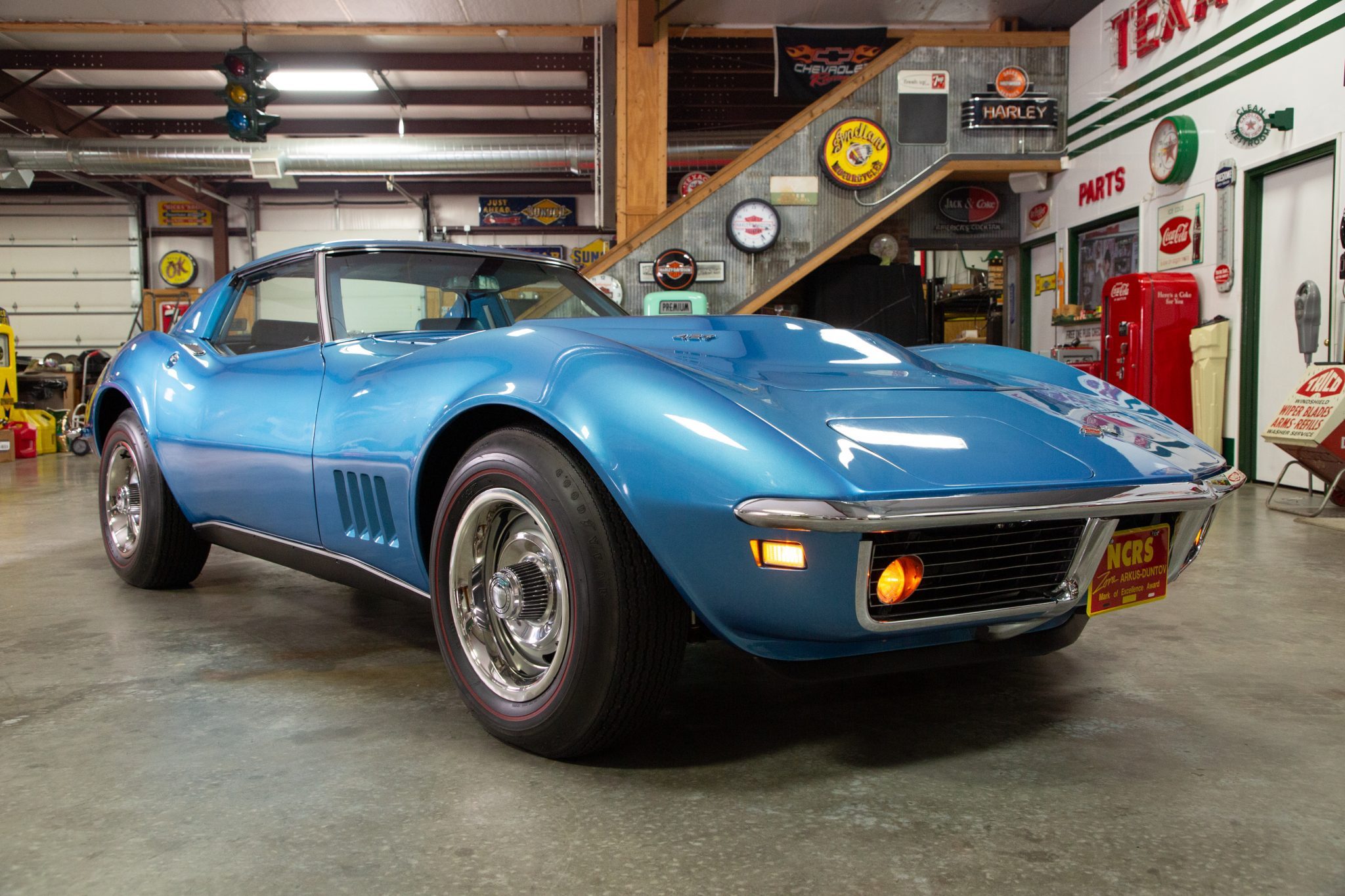
1968 - 1969 Corvette
A new body introduced that sat on the framework of the mid-year Stingray (1963-1967), the new '68 was a toned down version of the 1965 Mako Shark ll show car. It came in convertible and coupe styles. On the coupe, some stylistic features included the industry’s first t-top roof with two removable roof sections and a removable rear window giving the car a convertible feel. Very exciting for the times, the car had hideaway headlights, hidden windshield wipers and a new three speed Turbo-Hydramatic transmission to replace the previous Powerglide. There were six engine choices available from a 327 to a 427 with numerous horsepower ratings available. A long list of optional features allowed the customer to build the perfect sports car suited to their individual tastes. This was the first American car design to eliminate the side vent window from the door. A base 1968 sold for $4,663.00 and included a 327 300 hp and a three speed manual transmission with a vinyl trimmed interior.
For '69 a new door entry handle was introduced that eliminated the push button and hand flap from 1968. Instead, the release mechanism was incorporated into the hand flap, a very futuristic design for it’s day! The passenger compartment was widened by one inch. This was accomplished by shrinking the thickness of the door panels. Also, air induction was improved to help alleviate the car’s proneness to overheating. The passenger side of the dash received three little pockets that came to be known as “map pockets”. Buyers still had the choice of no fewer than six engine /transmission combinations. Wheels were widened to 8 inches and tires were still of bias ply construction. The base motor was now a 350 and 1969 was the last year for the three speed manual transmission.
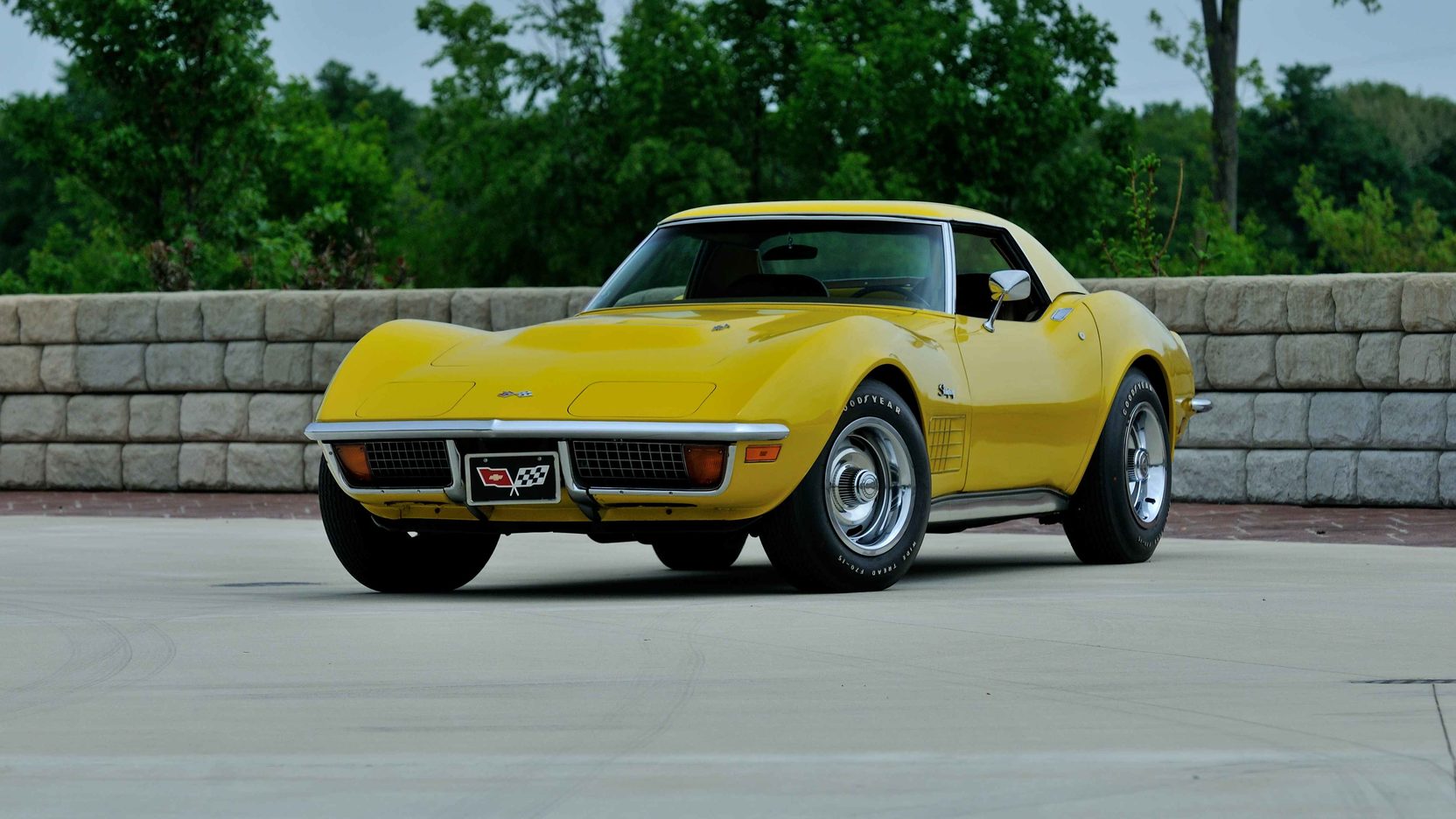
1970 - 1972 Corvette
A new design on the side fender vents brought a crosshatch grill type cover. Refinements continued as the fenders were now flared to reduce stone chip damage. Big block displacement increased to 454 cubic inches. This year saw the introduction of the solid lifter LT-1 producing 370 HP in the 350 engine. Also, 1970 was the first ZR-1 designation for a “special engine package”. If you liked the 1970 model, then you loved the 1971. There were very few changes, mainly due to a strike which shortened the production run. Engine choices were down to just four and this was the last year the fiber optic light monitor system was on board. Appearance changes were few for 1972, the last of the true chrome bumper (front and rear) Corvettes. The fiber optics system was gone, a bright egg crate grill was introduced, side fender grills were functional and this was the last Corvette that the rear window could be removed and stowed (coupe). Engine choices were now down to three. The base 350, the special 350 LT-1 and the 454 big block were now designed to run on the soon to be available and mandated low lead fuels, a sign of the changing times and a peek at things to come.
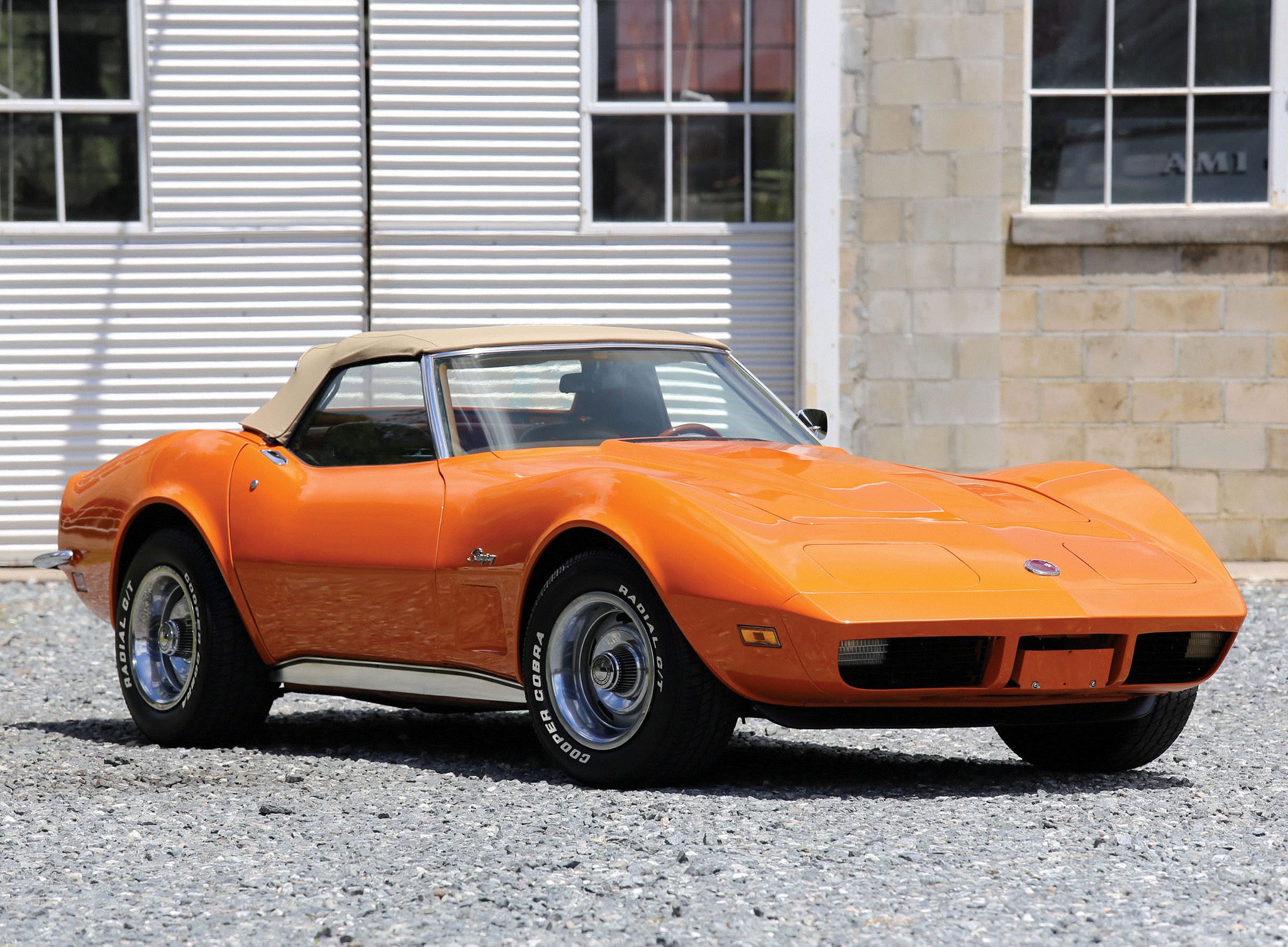
1973 - 1974 Corvette
This was the car that became the whipping post for Road and Track magazine as they were already and had even projected an “all new” mid engine Corvette! When the ’73 model debuted with some more subtle changes, mainly a new urethane covered front bumper that could withstand a 5 mph bump and the now fixed rear window, plus the first year that Corvette rode on steel belted radial tires; well, they were a bit embarrassed and from this point on, the Corvette (to them) became a car to bemoan and put down. My personal observations do not reflect those of R&T. On the '73, better sound insulation knocked down the interior decibels and the body mounts were redesigned to give a softer ride. There were a reported 4000 VINs missing from 1973 production (24001-28000) and production totaled 30,464. However, the VINs end at 34464. The hood was redesigned to eliminate the windshield wiper hatch. There were steel beams in the doors now to give some added side collision protection and generally speaking, the car was becoming more of a personal car rather than a brutish sports car. The first oil embargo was about to grip the nation and something Americans had always taken for granted suddenly became threatened. Engine choices were now down to three.
1974 was a year of more refinements, less power output, and the last year for the big block engine. Rear bumpers were now urethane covered with a center split, radial tires were available in black sidewall, raised white letter or white sidewall stripe. A couple of suspension options included RPO FE-7 gymkhana suspension which was designed for those who liked a slightly stiffer ride, and RPO ZO-7 was an off road suspension and brake package. Only 47 cars were ZO-7 equipped. Once again, the car was growing more in the flavor of boulevard cruiser than flat out sports car and the options chosen by the buying public reflected that. Out of the total production run of 37,502 only 3,494 big blocks were ordered and only 6,690 of the L-82 higher output 350 were ordered. The majority of consumers felt the base motor linked with the manual or automatic was plenty sporty enough for them. Also, this was the last year for true dual exhaust and the last year Corvette could run on regular leaded gasoline (91 minimum octane).
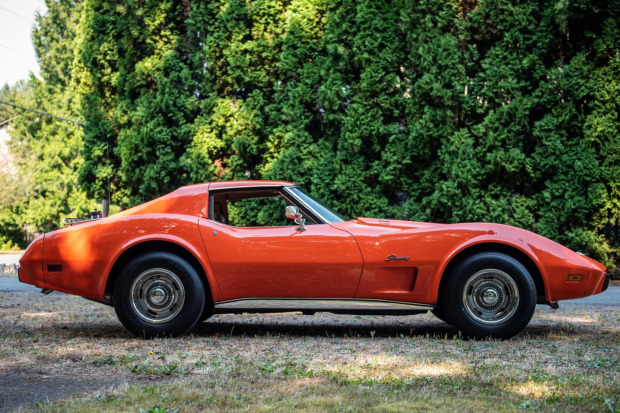
1975 - 1978 Corvette
New for ’75 was a one piece rear bumper cover along with the front and rear bumpers receiving two little black extensions known as bumperettes. The big block was gone! Engine choices were now down to two. The base L-48 350 was rated at 165 BHP and even the optional L-82 only produced 205 BHP. This would be the last year for the convertible body as the buying public opted more and more for the coupe, plus the fact that convertibles were being phased out industry wide. Corvette firsts for 1975 included catalytic converters which required unleaded gasoline, no true “dual exhaust” as the pipes were routed into a forward “y” pipe through a single converter and split into twin mufflers by a rear “y” pipe and high energy ignition which supposedly lengthened the service intervals for tune-ups and such. Still, for a sticker price at around $7,000.00 with options, it was still considered a bargain in high performance machinery.
America’s bicentennial saw minor exterior changes for the 1976 Corvette and a “4 spoke” steering wheel outraged many corvette owners as the wheel could be found on several Chevrolet cars including the Vega. The engine data plate would make it’s last appearance and the car was gearing toward creature comforts. The hood was a one year design as air induction by the windshield was “tunneled” through a hollow duct on the underside of the hood to bring in air closer to the radiator eliminating more interior noise. Earlier production '76 rear bumper covers had a tightly scripted corvette emblem which was replaced during later production by a larger script. The Stingray script on the fenders would also make it’s last appearance. All in all, still a great and reliable sports car.
A “carry over” year (much like the 1967) the refinements were numerous throughout the production run. Early cars had orange painted engines and no fender script. The only fender adornment was the alarm key tumbler for the early '77 production. The interior was ramped up with leather seats now standard, the rear view mirror was now affixed to the windshield and the sun visors actually swiveled to the side to give some protection from side glare. A new three spoke leather wrapped steering wheel adorned the optional tilt telescopic column, engine HP remained the same as 1976, 180 for (L-48), 210 for (L-82), the shifter was shortened by one inch and the steering column by two inches to aid entry and exit. A pair of cross flags appeared on the front fenders after a few thousand cars had been built. Later, the alarm switch was incorporated into the driver’s door tumbler and only cross flags adorned the fenders. The brushed aluminum horn cap was recalled as a safety issue to have it replaced by one painted to match the interior color, the firestone 500 steel radials were also a subject of recall due to the steel belts separating. The Goodyear Steelgard radials were not affected. The interior’s redesigned console allowed for the entire line of Delco radios to be installed and the buyer could now opt for an 8 track tape player as well as the mono and stereo am/fm radio. This was the first year cruise control was available in Corvette with the automatic transmission, headlight high beams, wiper/wash controls were now incorporated on the turn signal stalk. 1977 proved to be a super Corvette and even today, it is one of the most overlooked bargains in sporting machinery.
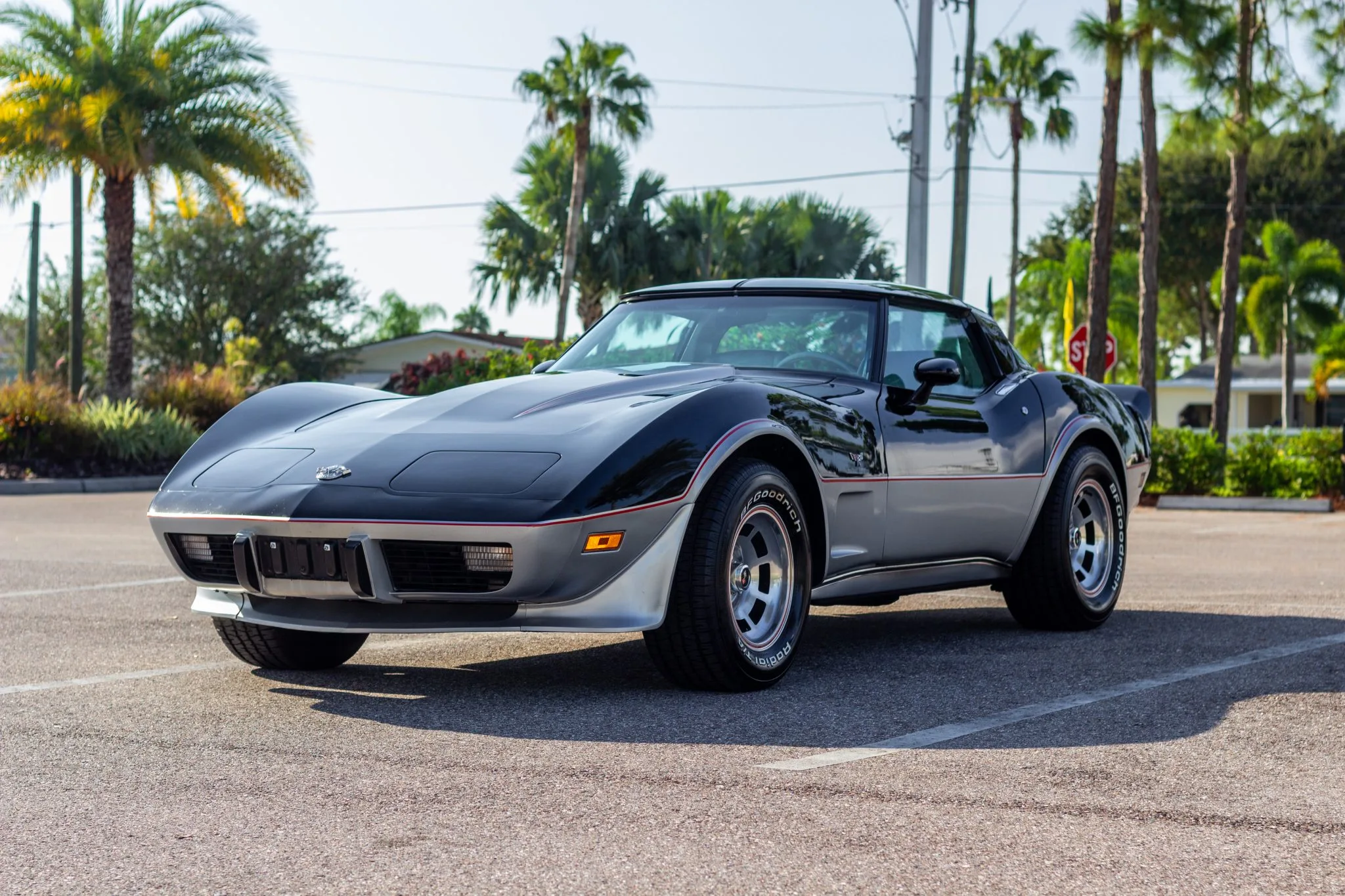 © Bring A Trailer
© Bring A Trailer1978 - 1979 Corvette
1978 was the 25th anniversary model with a new “fastback” glass roof line that looked like it should have been an open hatch style but was fixed. And, Chevrolet produced a stunning two tone light silver over charcoal paint scheme (RPO B2Z) which was the most popular color choice for the year that produced 15,283 Corvettes in that combination. To mark this historic milestone in the car’s history, Corvette for the first time was chosen to pace the 1978 Indianapolis 500 in May of that year. Chevrolet produced 6502 replica pace cars from March through May of 1978 with each car having it’s own special VIN ending in 900001-906502. These cars were priced to reflect the “limited” production run with a price tag over 13K. For this you got the special B78 paint scheme of black over silver with red accent stripe, front and rear spoilers (bolt on) leather/cloth leather interior in silver only, new clamshell seats that were lighter and folded flat allowing easier access to the rear stowage area, glass roof panels in a silver tint finish and decals to adorn the car that were to be dealer installed at the customer’s request. We saw a speculator’s market ensue these cars pushing the asking prices up into the mid-twenties (even higher) in some cases. Today, a decent pace car will still bring mid 20-30 K. New for this year was a larger fuel tank that was increased from 18 gallons to 24 gallons by the introduction of the smaller spare tire.
1979 saw a new front nose emblem and gas lid emblem. Cross flags were the exterior adornment for 1979. Production topped out at a whopping 53,807 coupes which still stands to this day as the all time sales/production record for Corvette. The interior received the clamshell seats that were similar but not quite the same as those on last year’s pace car. The pace car spoiler package was carried over as optional equipment and the car was just a great all around sports car.
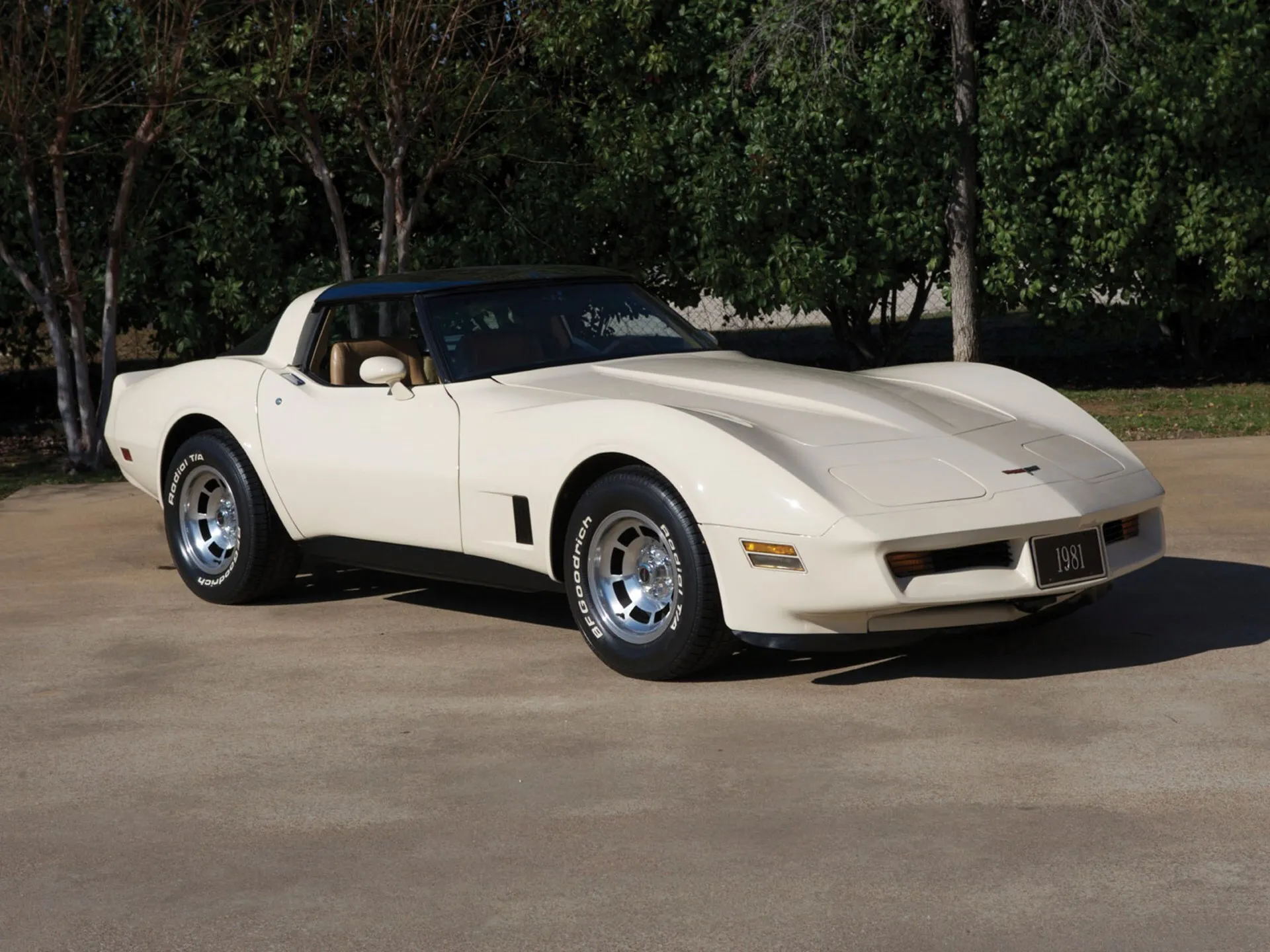
1980 - 1982 Corvette
1980 saw a new shovel nose bumper incorporating spoilers and the rear bumper redesigned to include a spoiler as well. The cross flags were elongated and flattened out a bit, the optional aluminum wheels were now highly polished and the engine choices grew to three including, the base L48, a 305 and the optional L-82 which required an automatic transmission. Although there have been numerous claims over the years of a “few” early manual L-82 equipped corvettes being produced, I have personally never seen one and the sales brochure does not list it as an option in the power team choices. Lastly, a 305 CI engine was mandated for California only, also with the automatic transmission. Inside we saw the speedometer federally regulated to read no greater than 85 mph and the rear stowage compartments behind the seats were now a two door design.
'81 was the last year for the manual transmission and engine choice (well you never had a choice) was down to one Federally approved L-81 190 HP power plant that was certified in all 50 states. More interior refinements included power mirrors and power driver’s seat. A new state of the art facility opened in Bowling green, Kentucky which replaced the St. Louis plant at the end of the model run. For two and a half months Corvettes were produced at both St. Louis, Missouri and Bowling Green, Kentucky. Interesting fact here was that St. Louis still used lacquer paint while the Bowling green facility started a basecoat/clear coat paint finish. Also, the two tone optional painted Corvettes were produced at Bowling Green, About 100 cars that employees who worked at St. Louis and ordered Corvettes were able to have them two toned.
Once again for 1982, a one year engine choice, the L-83 “cross fire” fuel injected engine. A special beige commemorative edition was available throughout the production run and had special cloisonné emblems and turbine spoke wheels that harkened back to the knock off wheels of the mid year corvettes. A special beige leather interior with multi colored accents and a rear window opened hatch style was included on the collector edition only. There were 6759 collector editions produced in 1982 and the fuel economy was improved due to the injected engine and 4 speed automatic transmission.
The C3 Corvette Market - Sales & Auctions
C3 Corvettes for Sale. This is our C3 Corvette auction and sales area. We share upcoming auctions, recent auction results, cool C3 Corvettes we find for sale and commentary on the current market for C3 Corvettes.
The C3 Corvette Newsfeed
Awesome restorations, sacrilege restomods, cool C3 Corvettes at auction or for sale, this is your newsfeed for all things C3 Corvette.
C3 Corvette Technical Research
Production and sales numbers, order guides and sales brochures, we have more C3 Corvette research than you could ever want.
C3 Production
Ever wanted to know just how many C3 Corvettes were made? We have you covered.
C3 Engines
Want to know more about the engines the powered the earliest Corvette? Here you go.
C3 Pricing
Looking to decode your C3 Corvette or find the options and pricing for reference. See them all below.


